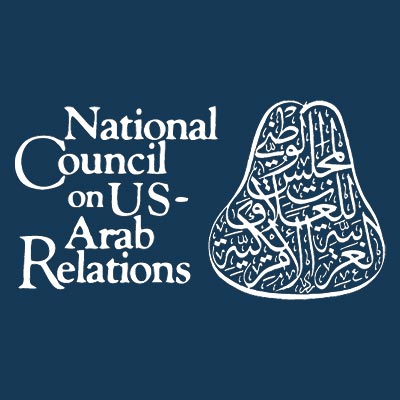In 2019, the Kingdom of Saudi Arabia began issuing tourist visas. Through its Vision 2030 development plan it has made significant investments to develop infrastructure and promote its diverse collection of mountains, beaches, coral reefs, grasslands, and forests, let alone the largest sand sea in the world! Tourism and travel bridge people, time, and cultures, leading to deeper understanding.
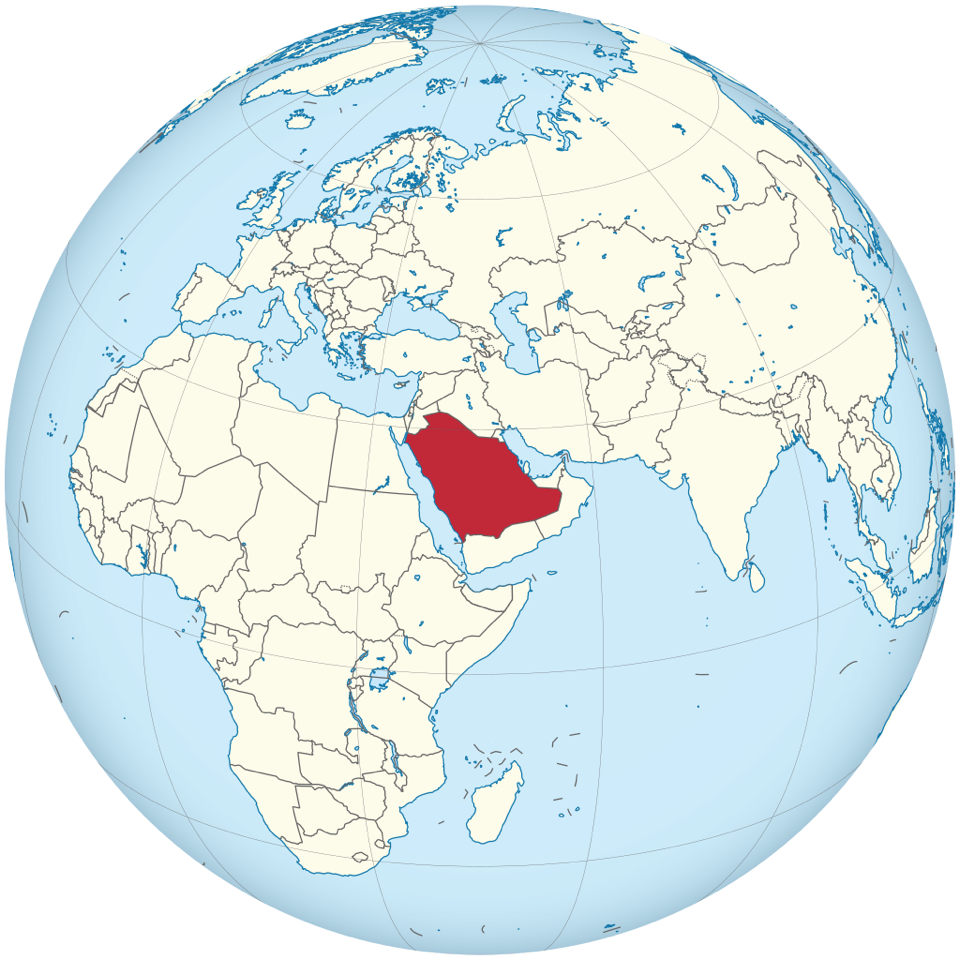
The Kingdom of Saudi Arabia is approximately the size of France, Spain, Germany, Italy, United Kingdom (twice), Greece, and Portugal combined. In reference to the United States, its land area is roughly equal to all states east of the Mississippi River. Saudi Arabia is more than 3 times the size of the state of Texas.
Saudi Arabia shares land borders with seven countries: Iraq, Jordan, Kuwait, Oman, Qatar, the United Arab Emirates, and Yemen. Across a 16 miles (25 kilometer) causeway in the Gulf lies the island kingdom of Bahrain.
With over 35 million inhabitants, Saudi Arabia has 13 provinces all united by the Arabic language, but each with unique dialects, traditions, cuisines, landscapes, and heritage.
One cannot help but be moved by the imposing contours and beauty of the seemingly endless, ever-changing, windswept Arabian dunes, the sand-washed ancient cities, and the sparkling waters of the Red Sea and the Gulf.
Taif is different.
[su_lightbox type=”image” src=”https://ncusar.org/wp-content/uploads/2025/02/ksa-taif-highlight-4k-1-scaled.jpg”]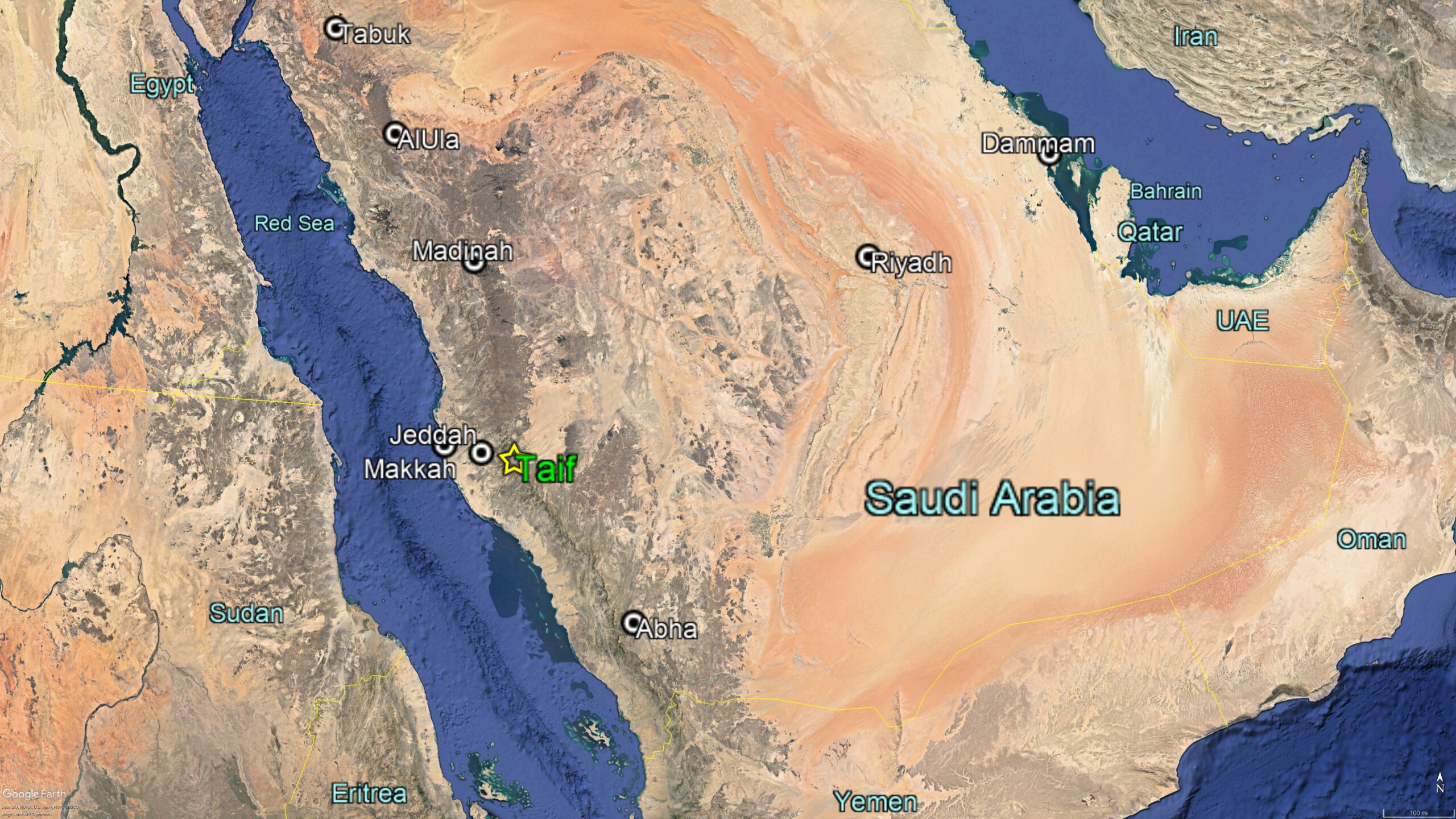 [/su_lightbox]
[/su_lightbox]
There are no permanent rivers or lakes in the Kingdom.
The desert, often scorching hot by day, can become surprisingly cold at night. When it rains, the water gathers and is stored in the dampened sand. Little evaporation occurs once rain sinks below seven feet. It is believed that some plants today are still drawing moisture from rain that fell more than a thousand years ago!
There are still Bedouin tribes traditionally known for their bravery, chivalry, generosity, and hospitality in Saudi Arabia. Very few of them still live a nomadic life or depend solely on their animals for food. Most live near towns, hold jobs, send their children to school, and only camp in the desert during specific periods of the year.
There are many cities as well as Bedouin areas on the Arabian Peninsula. Islam was born in two of those cities—Makkah and Medina. From there, the religion spread to a large swathe of the world, from Spain to China. As it expanded, it promoted a love of learning and science. Discoveries and developments from Arab and Muslim scientists provided the foundation for many of the ideas and concepts that were part of the European Renaissance and beyond.
When I was the Executive Vice President at the Huntsman Cancer Foundation, I traveled to Saudi Arabia several times.
I wanted to return.
I explored the Kingdom for 12 weeks in early 2022 with the purpose of writing and photographing the 13 regions of Saudi Arabia. I had the privilege of visiting Riyadh, Al-Ula, Madain Saleh, Tabuk, NEOM, Jeddah, Taif, Jubbah, Hail, Al Khobar, Dammam, Al-Hasa, and Abha in the Asir Region.
This is about my visit to Taif: City of Roses ~ Friend of the Clouds.
![]()
We drove from Jeddah to Taif on the non-Muslim road. I am a Christian. Taking the longer route didn’t offend me. It simply gave me more to see.
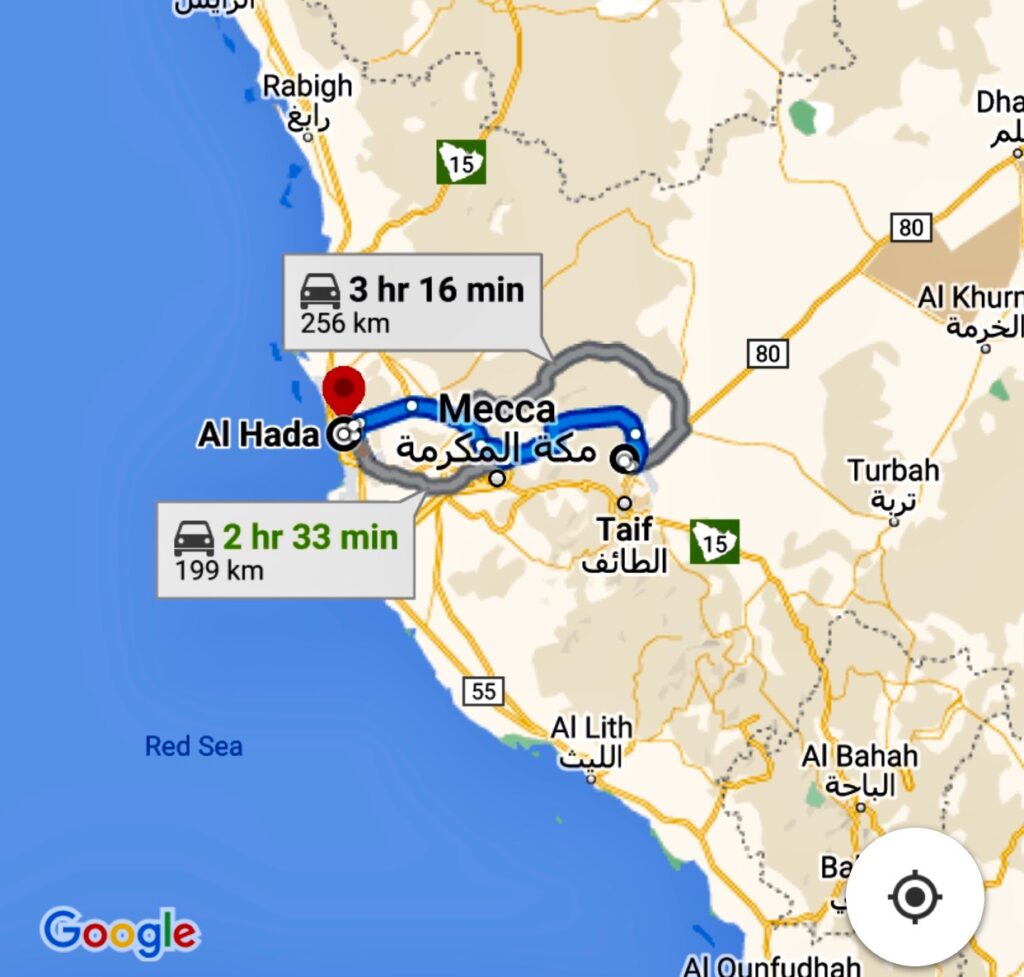
Simply getting to Taif, 73 miles east of Jeddah, is an adrenaline rush. We snaked up serpentine winding black roads through the mountains until we reached the Taif plateau.
Taif is situated in the eastern area of Al-Sarawat Mountains. It is known as the summer capital of Saudi Arabia as people flock to the more temperate region for relief from the summer heat.
Taif is named after different Arabian tribes from around the Kingdom that used to gather here to enjoy the weather and exchange merchandise before visiting Makkah.
Souk Okaz, just outside of Taif, is located in the same place that its been since at least 500 AD. It has tremendous historical significance for the Kingdom and the heritage of Arabia. A trading hub with an archaeological history of habitation back to the stone age, it has long been a destination for intellectuals, poets, and people passionate about culture and literature.
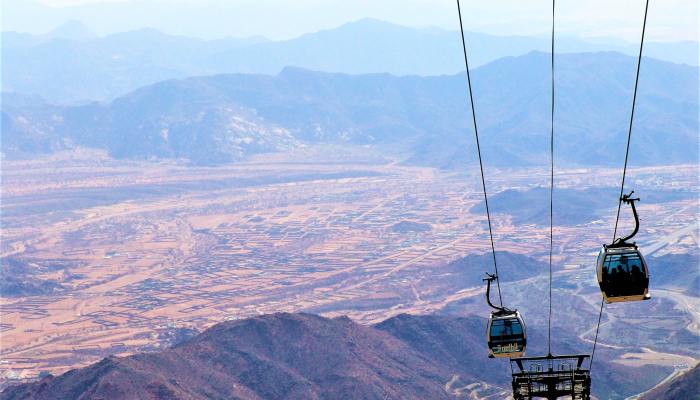
The Al-Massara International Equestrian Center was founded in 1982 and is reputed to be one of the largest horseback riding centers in the Middle East. It is also an auction house for Arabian horses.
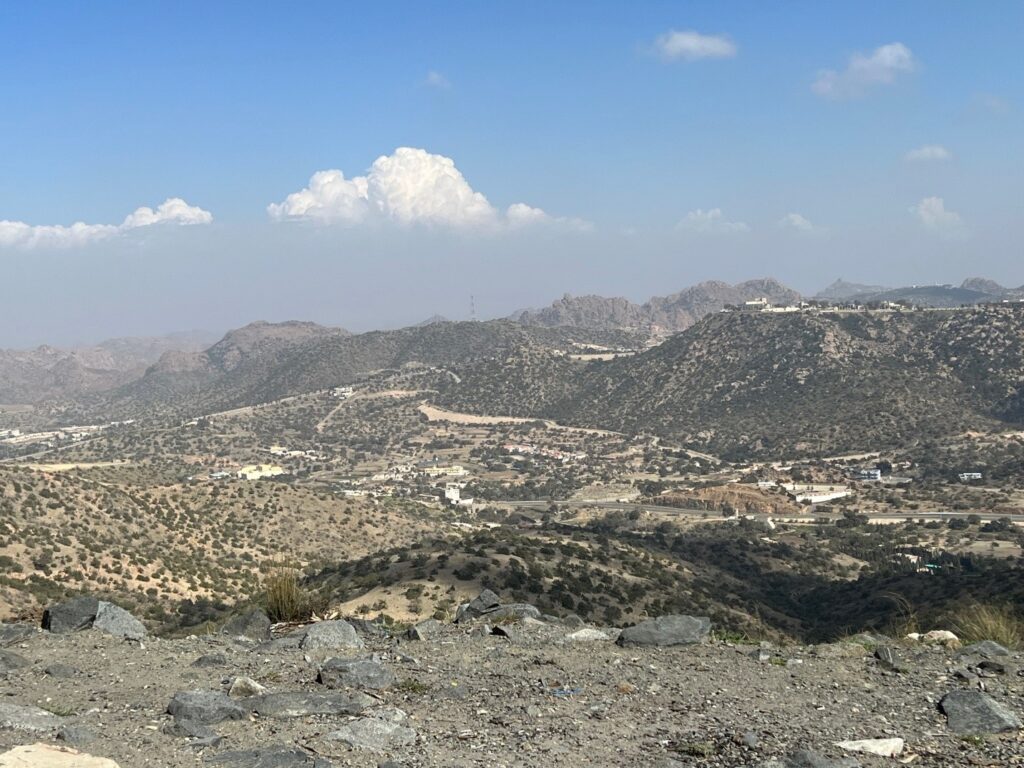
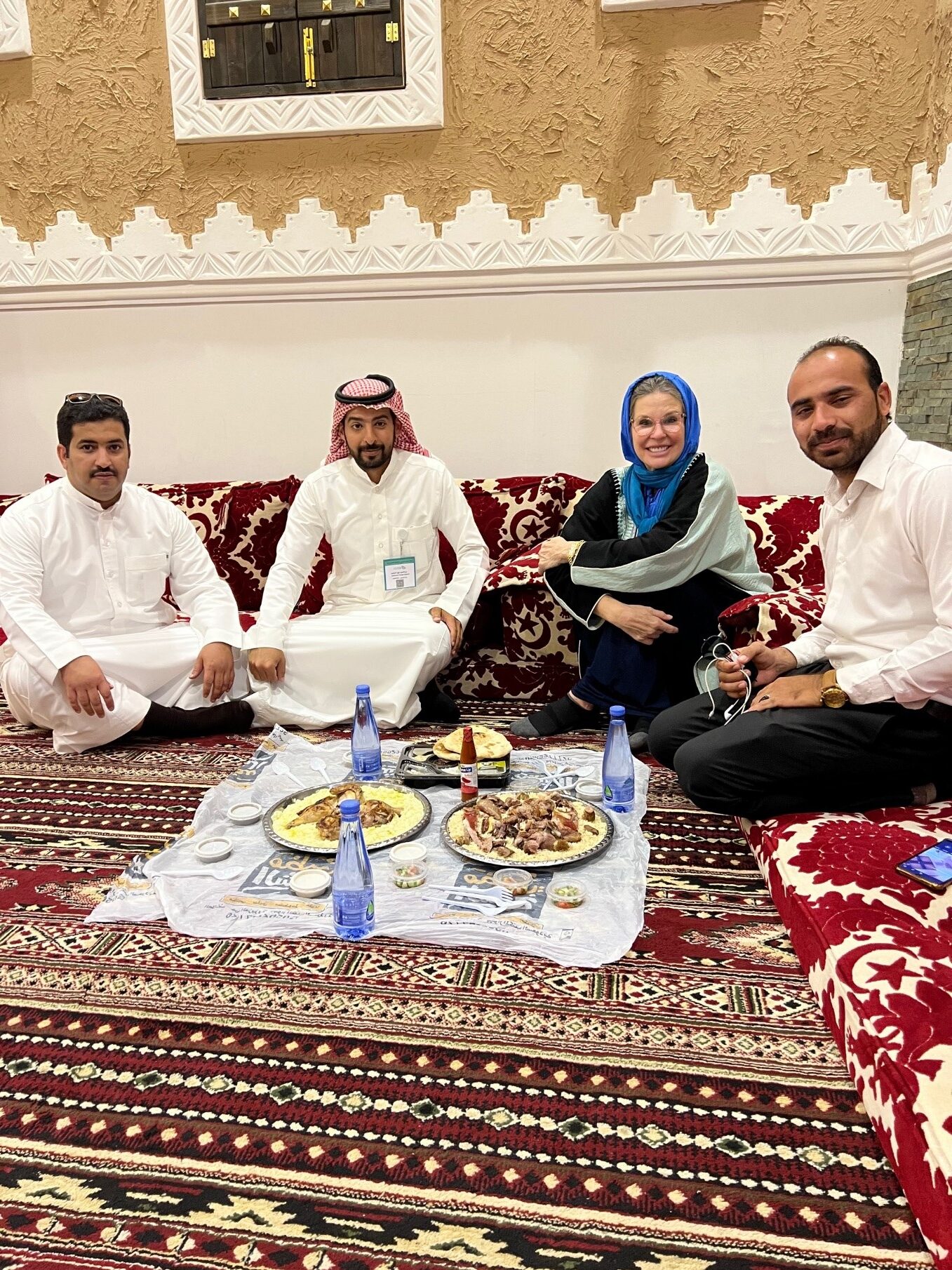
We had ridden far out over the rolling plains of North Syria to a ruin of the Roman period which the Arabs believed was made by a prince of the border as a desert-palace for his queen. The clay of its building was said to have been kneaded for great richness, not with water, but with the precious essential oils of flowers. My guides, sniffing the air like dogs, led me from crumbling room to room saying “This is jessamine, this violet, this rose.”
But at last Dahoum drew me: “come and smell the very sweetest scent of all” – and we went into the main lodging, to the gaping window sockets of its eastern face, and there drank with open mouths of the effortless, empty, eddyless wind of the desert…
“This” they told me “is the best…”
From Seven Pillars of Wisdom, by T.E. Lawrence.
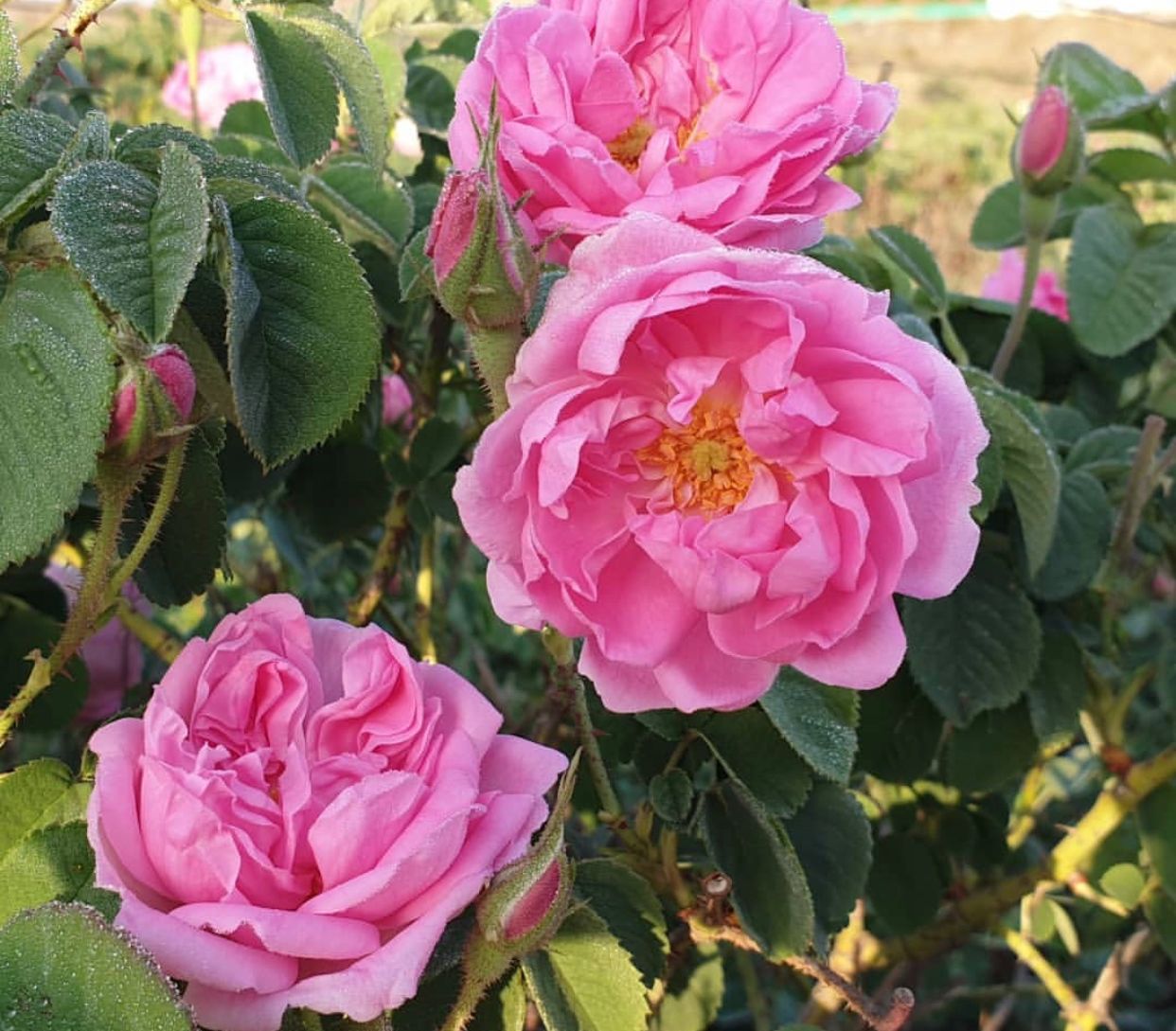
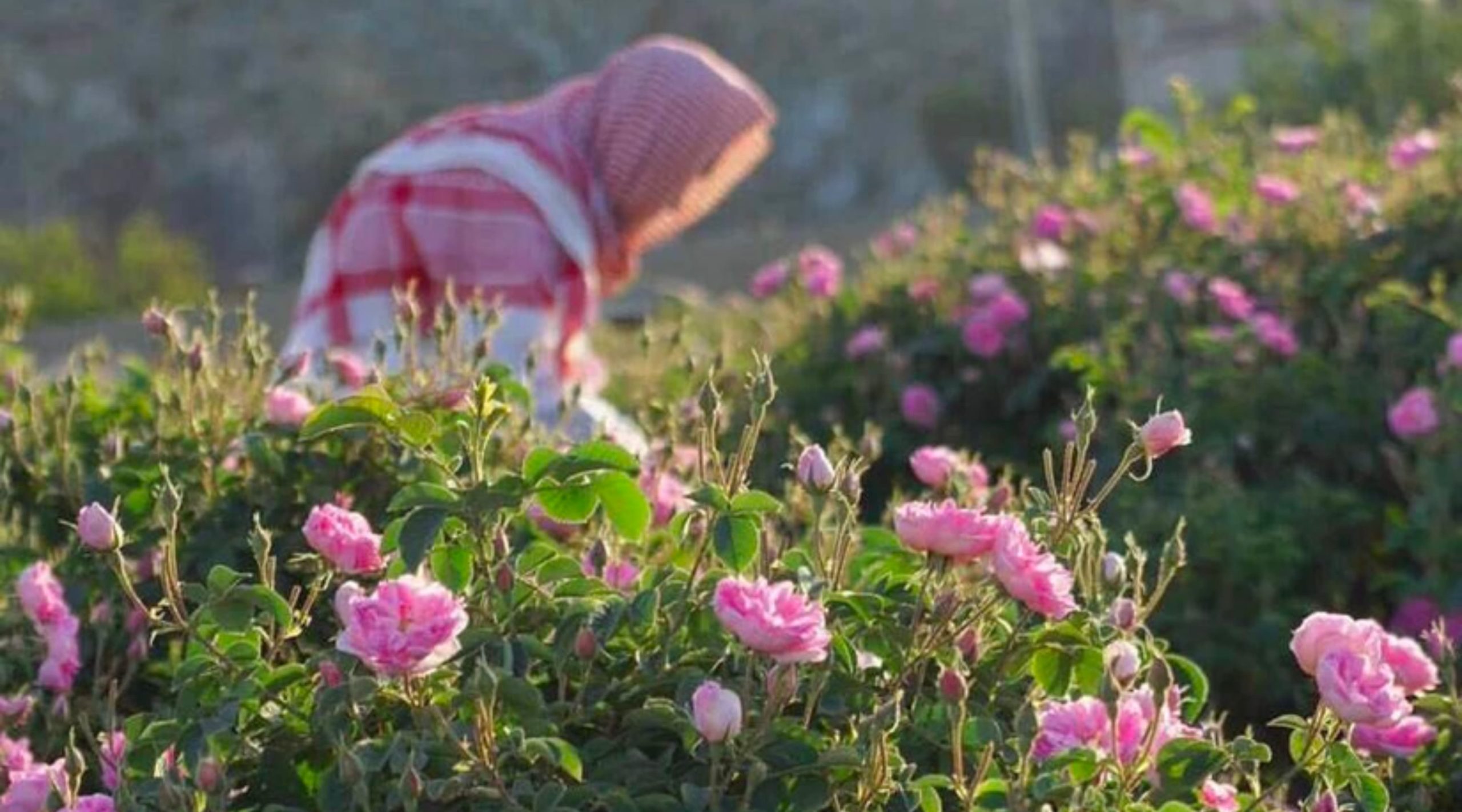
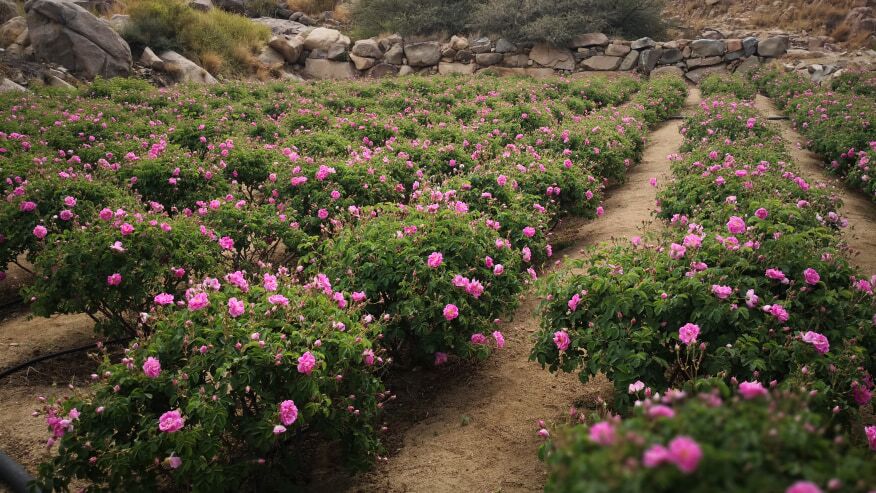

Every spring, rose bushes bloom throughout the city, from the valley of Wadi Mahram to the mountains of Al Shafa to the south. With more than 900 rose farms, the area produces the flower in such abundance that many are distilled into the world’s most expensive rose oil, or attar, and rose water, which is mixed into the perfumes of luxury brands around the world.
To grow roses in Taif is more than simply cultivating a crop for market. The craft is a lifestyle passed down from generation to generation.
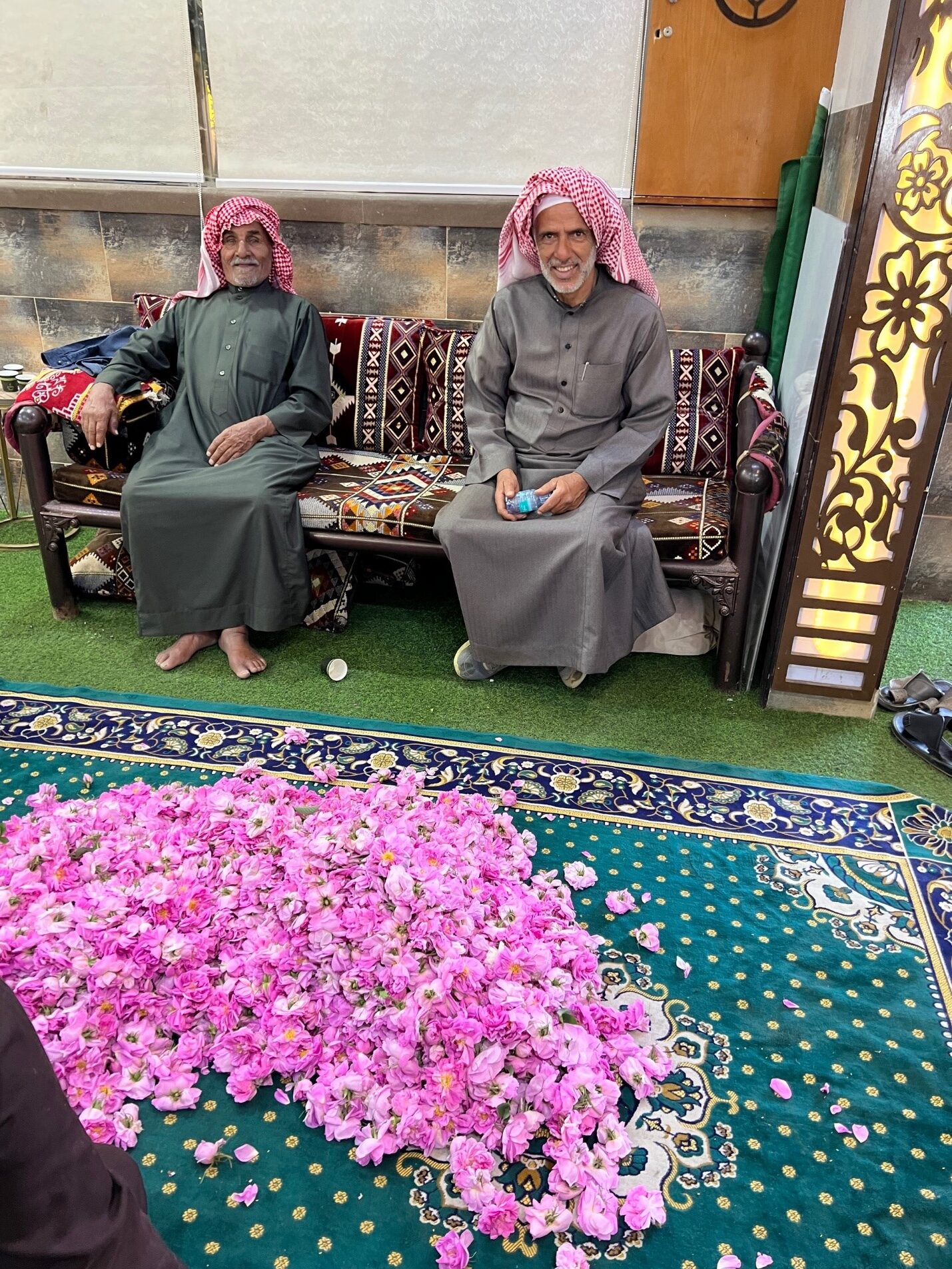
In April, the air in Taif fills with the sweet scent of the city’s famous 30-petal damask roses in bloom. More than 900 rose farms produce more than 300 million flowers, which are harvested to produce the world’s most expensive rose oil.
Taif Rose belongs to the species Damask Rose, which grows as a small, thorny bush with whitish hairy leaves, and pink and very fragrant 30-petal flowers. This rose is most commonly associated with Bulgaria and Turkey as countries of origin. More precisely, its lineage is traced to the valley Kazanlik in Bulgaria, where it has been cultivated for 330 years.
It is not fully understood how the 30-petal Damask Rose first appeared in Taif. Due to its close resemblance to the Kazanlik Rose, it has been suggested that the Taif Rose was brought to Taif from the Balkans by Turks who occupied the area in the 14th century.
In the West, the Damask Rose is known for its deep and intense fragrance. In the Arab region, it is the Taif Rose that is famous for the same characteristics. Taif Rose flowers, whose fragrance is even more intense than the fragrance of the Damask Rose, are harvested in April in the early morning hours because the buds bloom at dawn. It is necessary to pick them before the heat of the day destroys the essential oils required for the production of rose water.
The first description of the distillation of rose petals in the Middle East was provided by al-Kindi, a 9th century philosopher. A somewhat more sophisticated distillation apparatus was described by al-Razi in the 10th century.
Taif rose oil became famous across the Muslim world. Pilgrims coming from the east would often take a route through Taif to buy the rose oil. Those who could afford it would buy at least one vial of the precious rose oil as a souvenir.
To produce one 11-gram bottle of attar (rose oil) takes about 40,000 rose flowers.
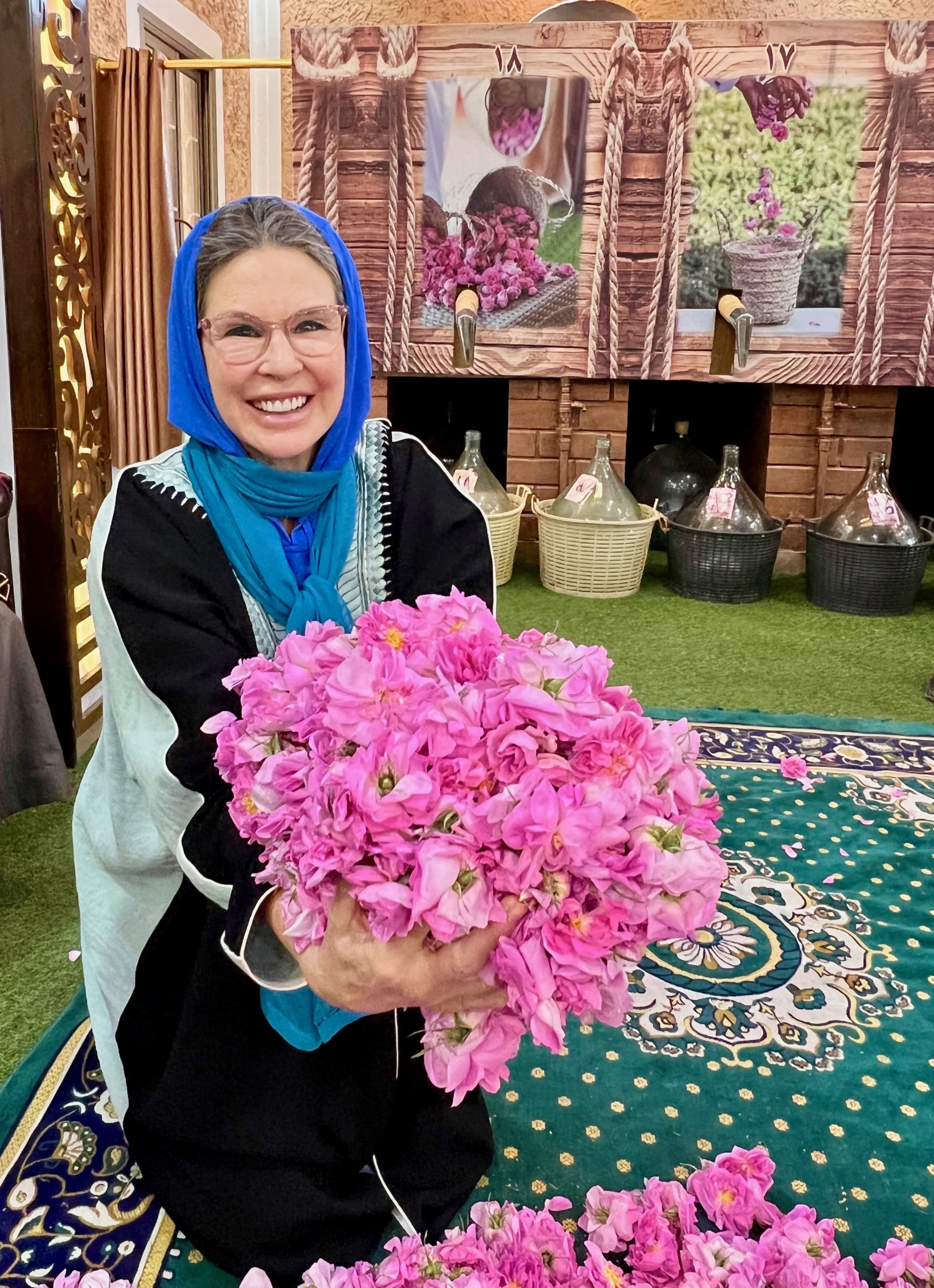

Taif is famous for Wardh Taifi, the Rose of Taif. The suburbs of Taif are known for cultivation of the rose, which economically outperforms all other crops in the region. Due to its cooler climate conditions, sophisticated irrigation systems, and fertile land, Taif is an ideal location for growing roses. While the bushes can live from 35 to 50 years, it is during their first 20 years that they produce the highest quality flower.

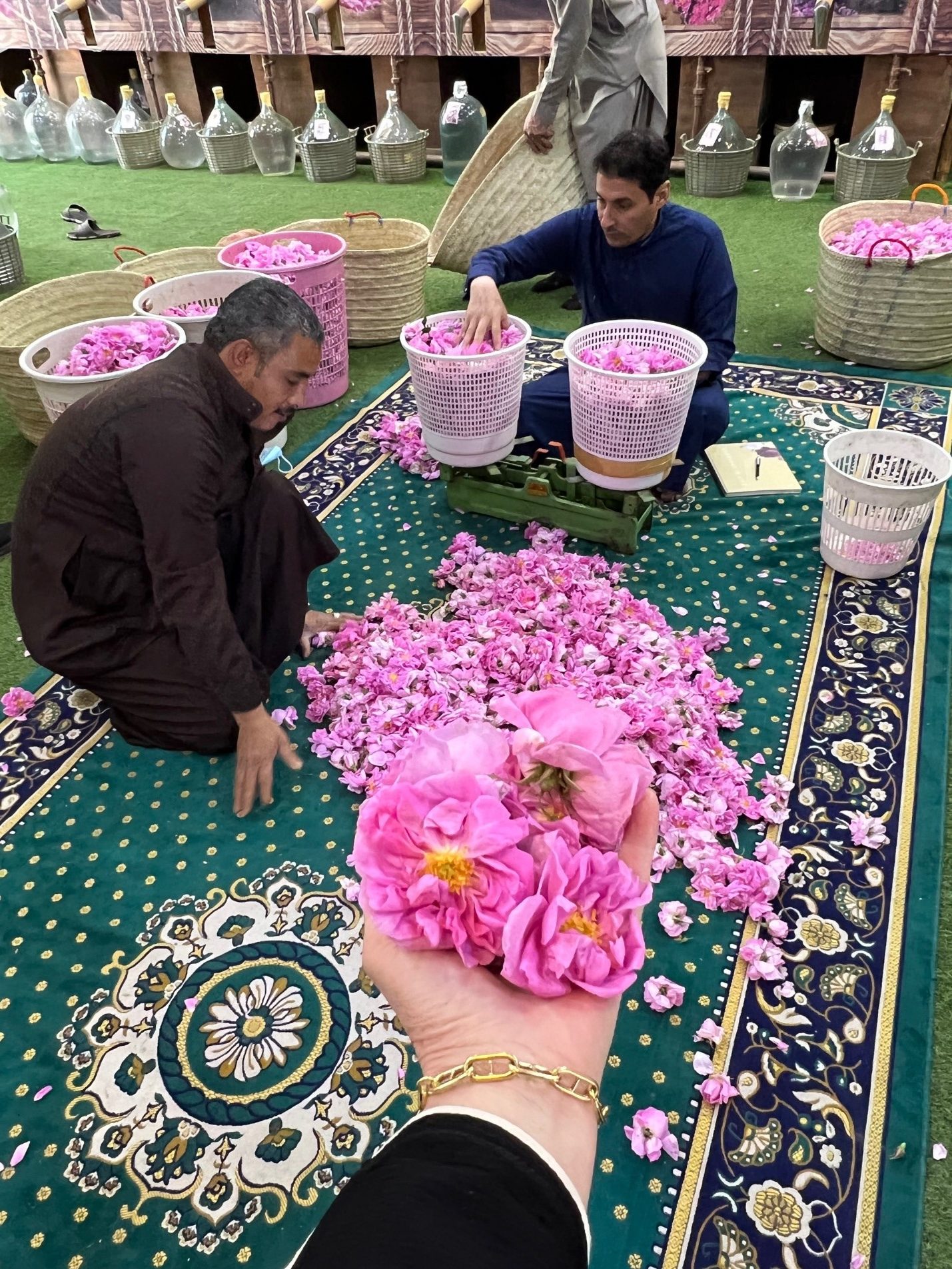
The process of making rose water begins with putting around 20,000 roses in a pot and filling it with 18 gallons (70 liters) of water. The pot is closed for 8 hours. Once done, aromatic oil settles on top of the water, which is then bottled and sold.

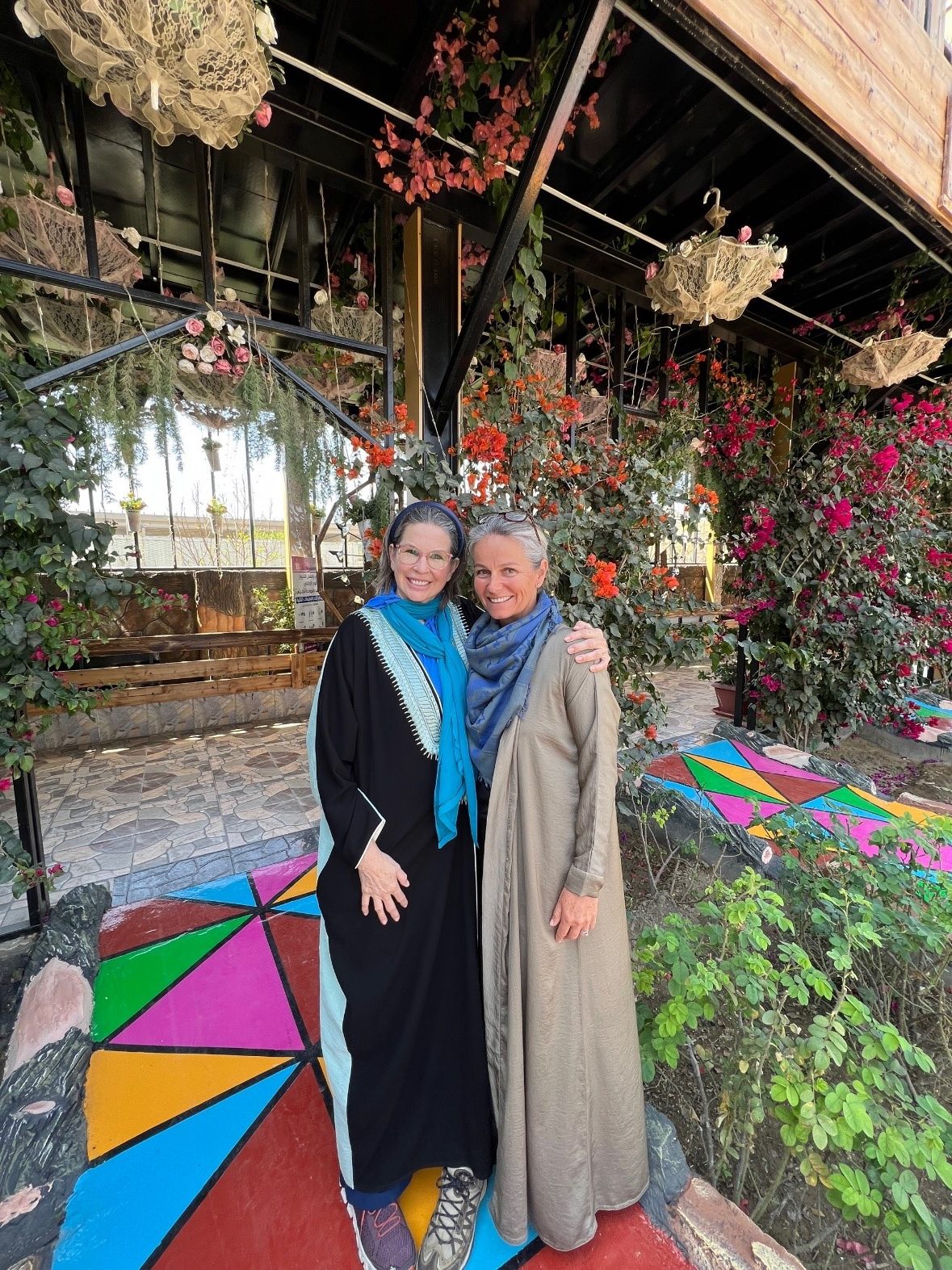
When traveling, you can make fast friends in extraordinary ways. Sheila Russell has lived in Jeddah for years and has created a beautiful life. She is a documentarian and photographer. We spoke enthusiastically about our love of this beguiling, and, at times, misunderstood country.
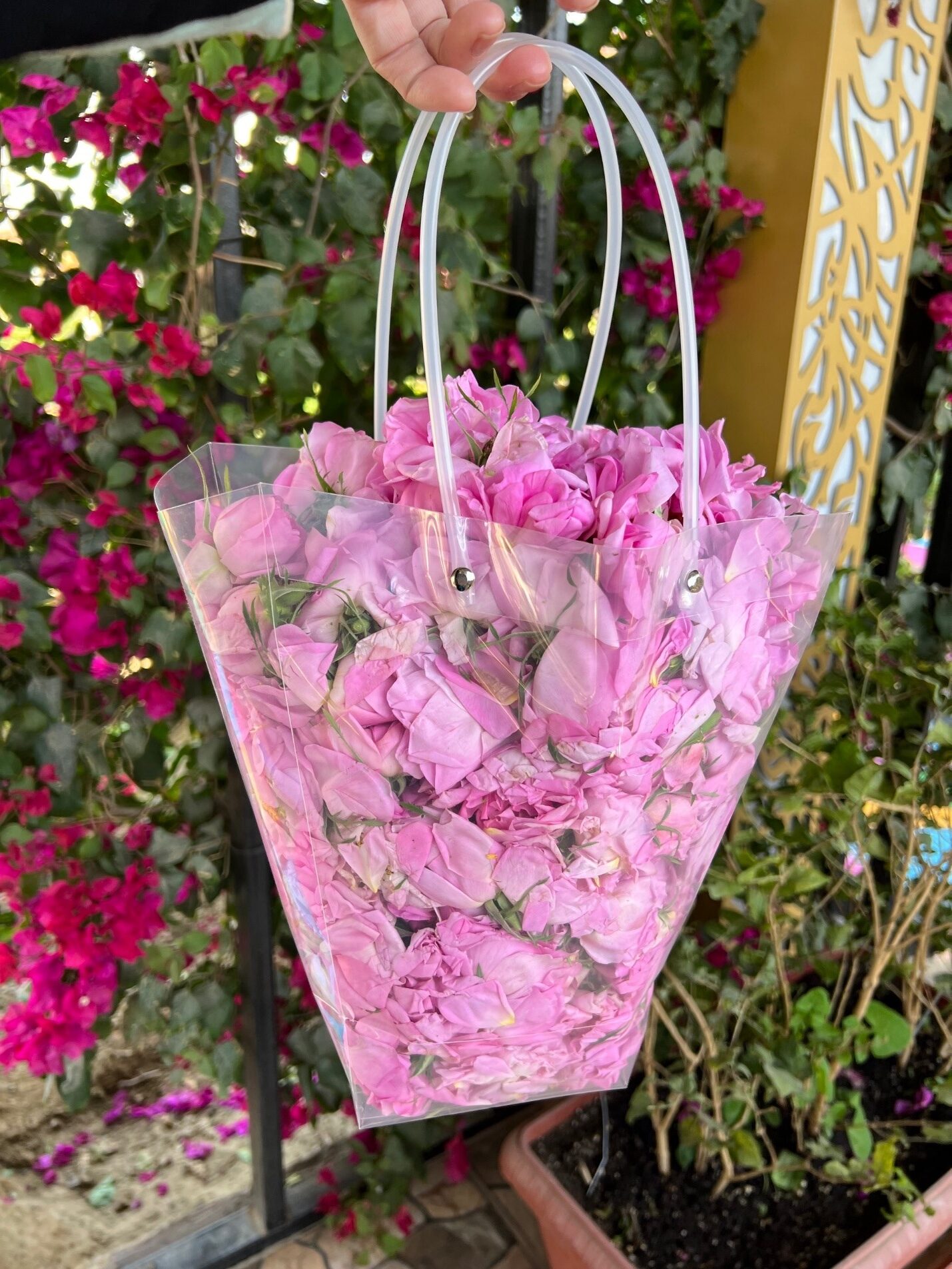
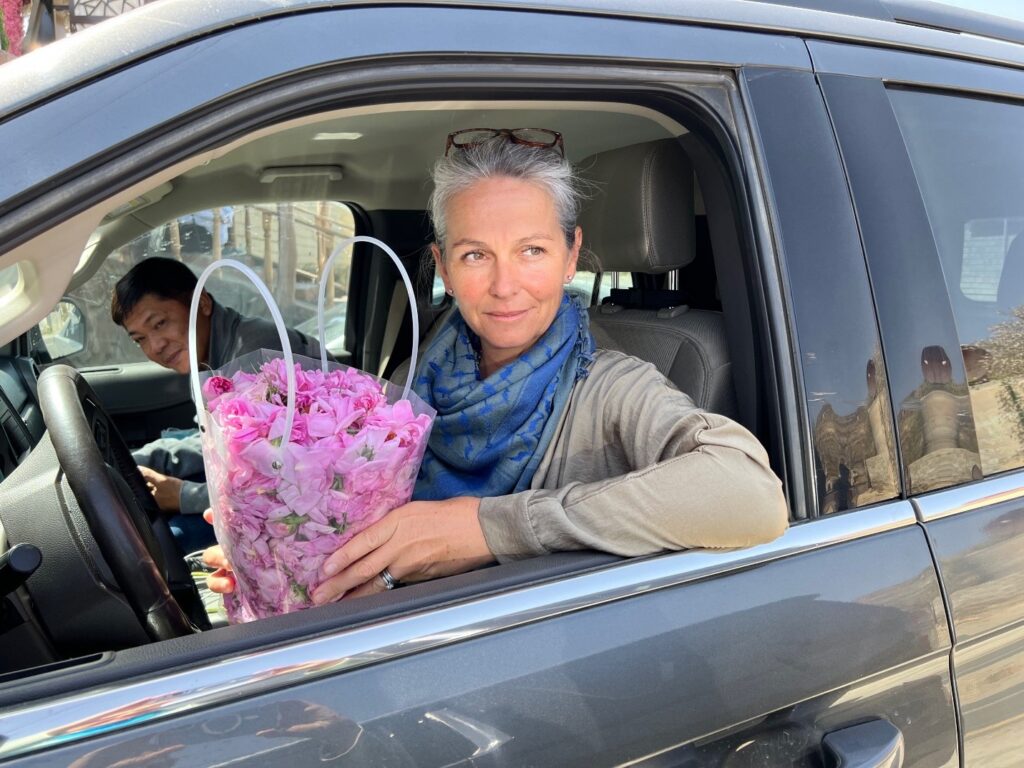
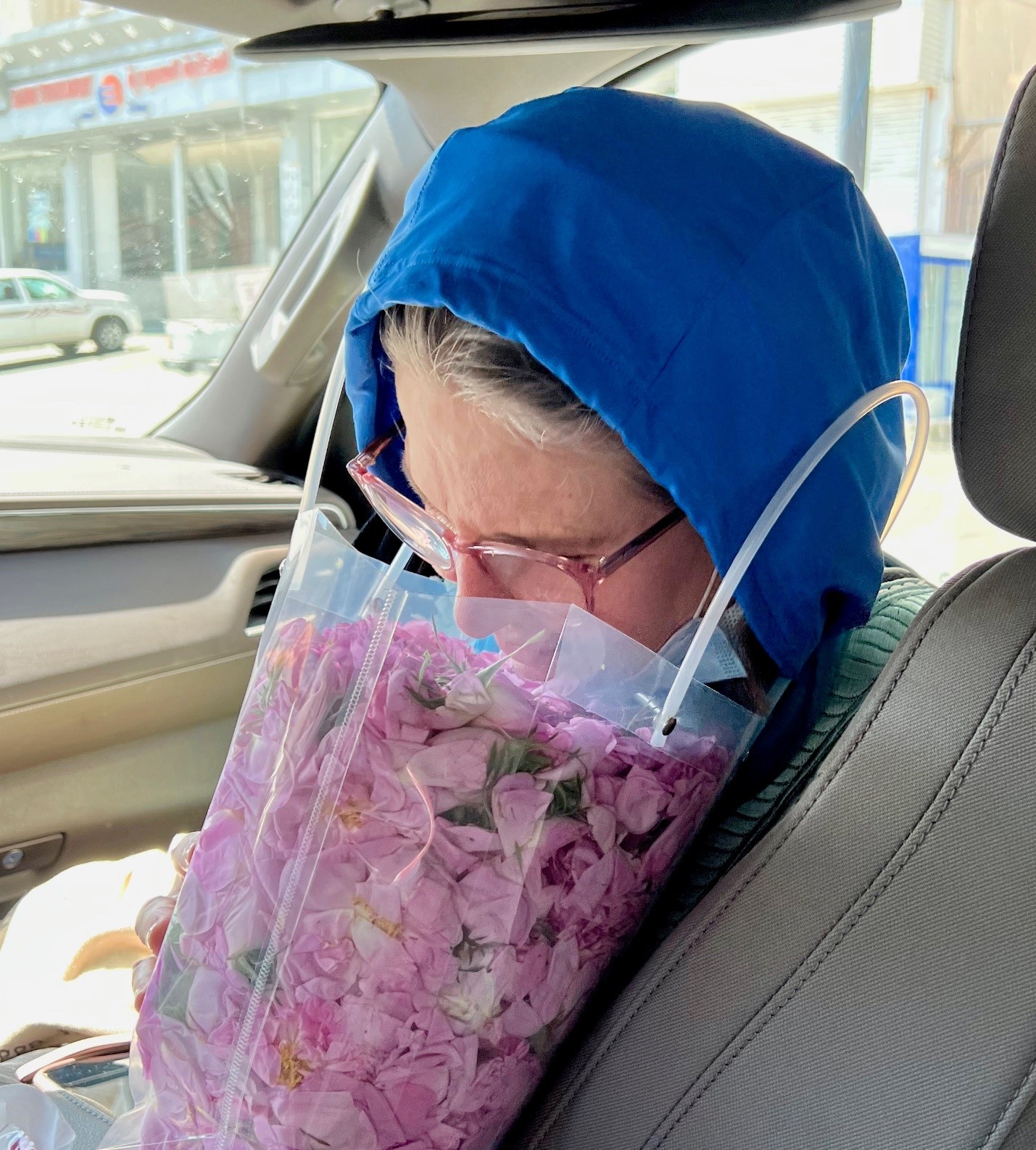
Roses not only have the most intoxicating scent, they are also ideal for lifting your spirits. We all know the saying “Stop and smell the roses.” It’s true: smelling roses encourages you to slow down and appreciate what is around you.
Taif is colorful. Unlike many desert communities where buildings are the color of sand, in Taif they are painted yellow, gray, ochre, white, and blue. Vibrant green trees are juxtaposed against the gray mountains with ragged and rough peaks. Long worn paths crisscross mountains where migrating animals and people have walked for millennia.
Taif was historically the food basket of Arabia and still accounts for much of its fruit production. Orchards of apricots, fields of wheat, and pomegranate trees thrive in this mountain region, which is also known for berries, grapes, dates, peaches, watermelons, and more.
Jumping the Gun: Majrour troupe performing the traditional “Taasheer” war dance.
Classic muzzle-loading rifles are carefully prepared for the “Taasheer” war dance, an extraordinary display of leaping and gunpowder blasts. Men and boys take weapons laid out in the bed of a truck, fill the barrels with gunpowder, and then take turns to showcase their abilities in what is also known as the fire dance. This tribal tradition is hundreds of years old. It was meant to motivate warriors and intimidate opponents.
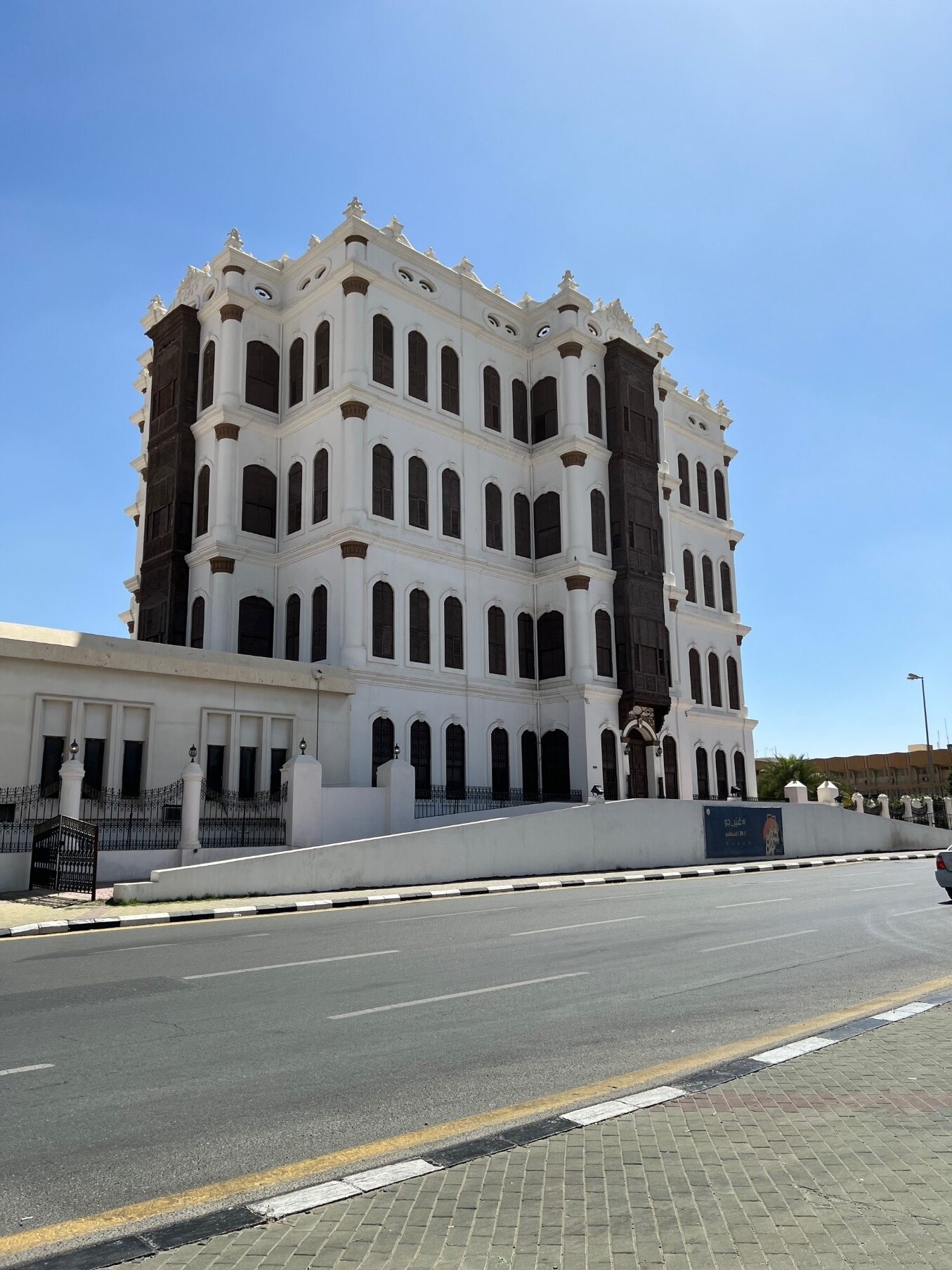
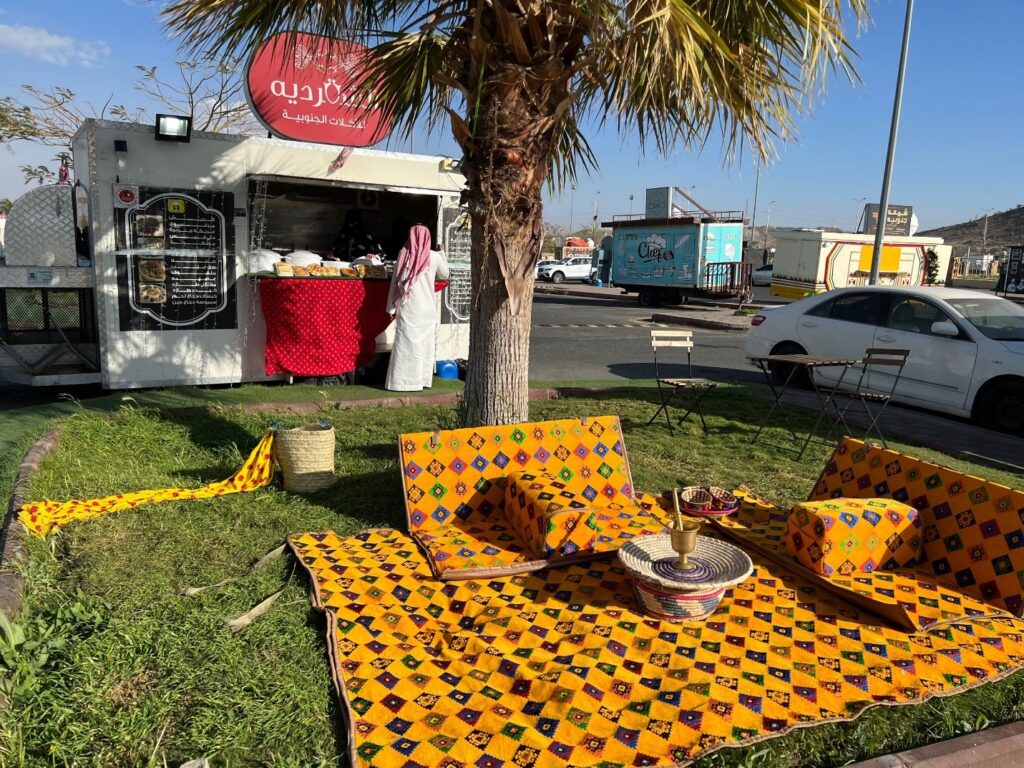
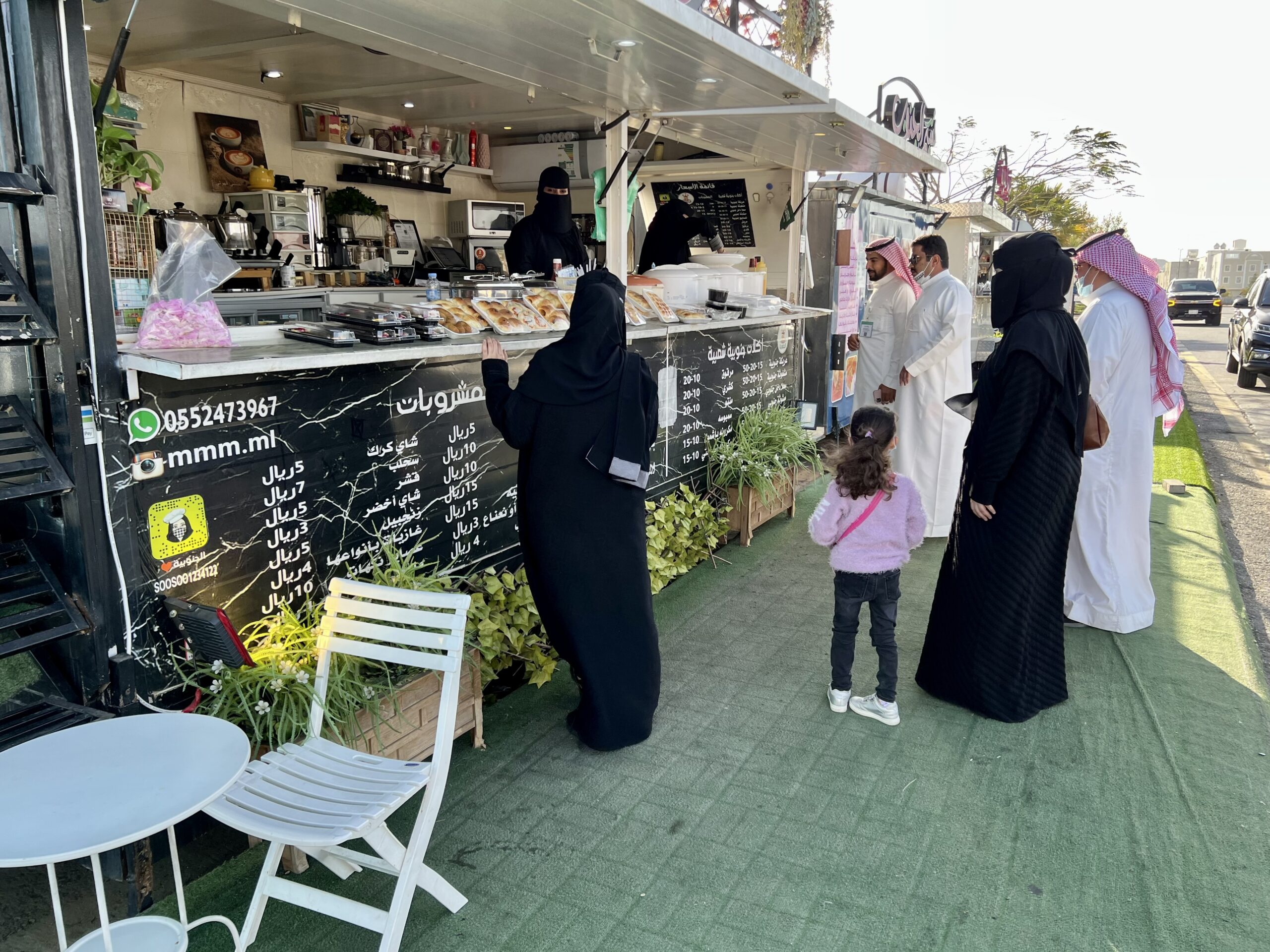

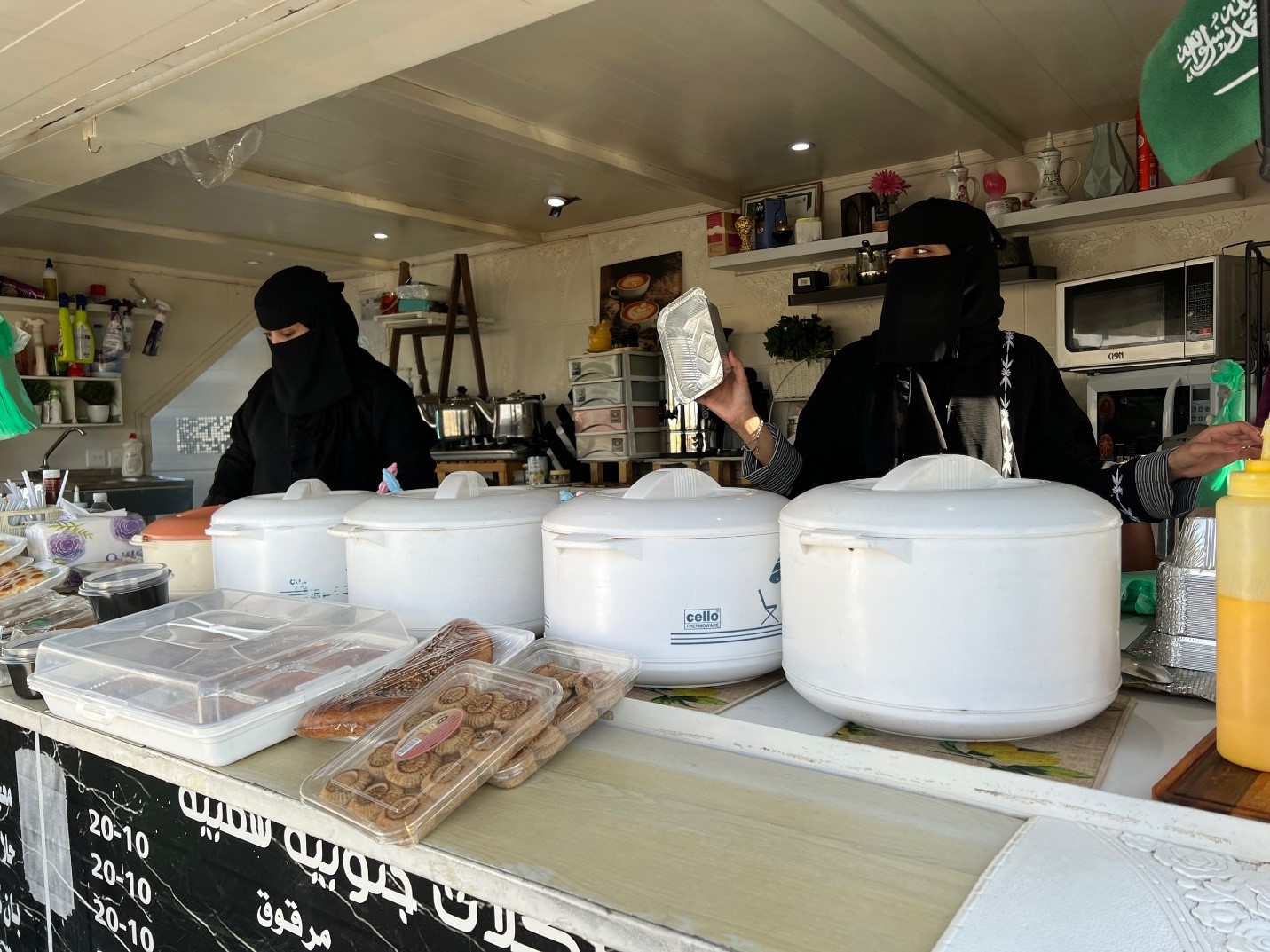
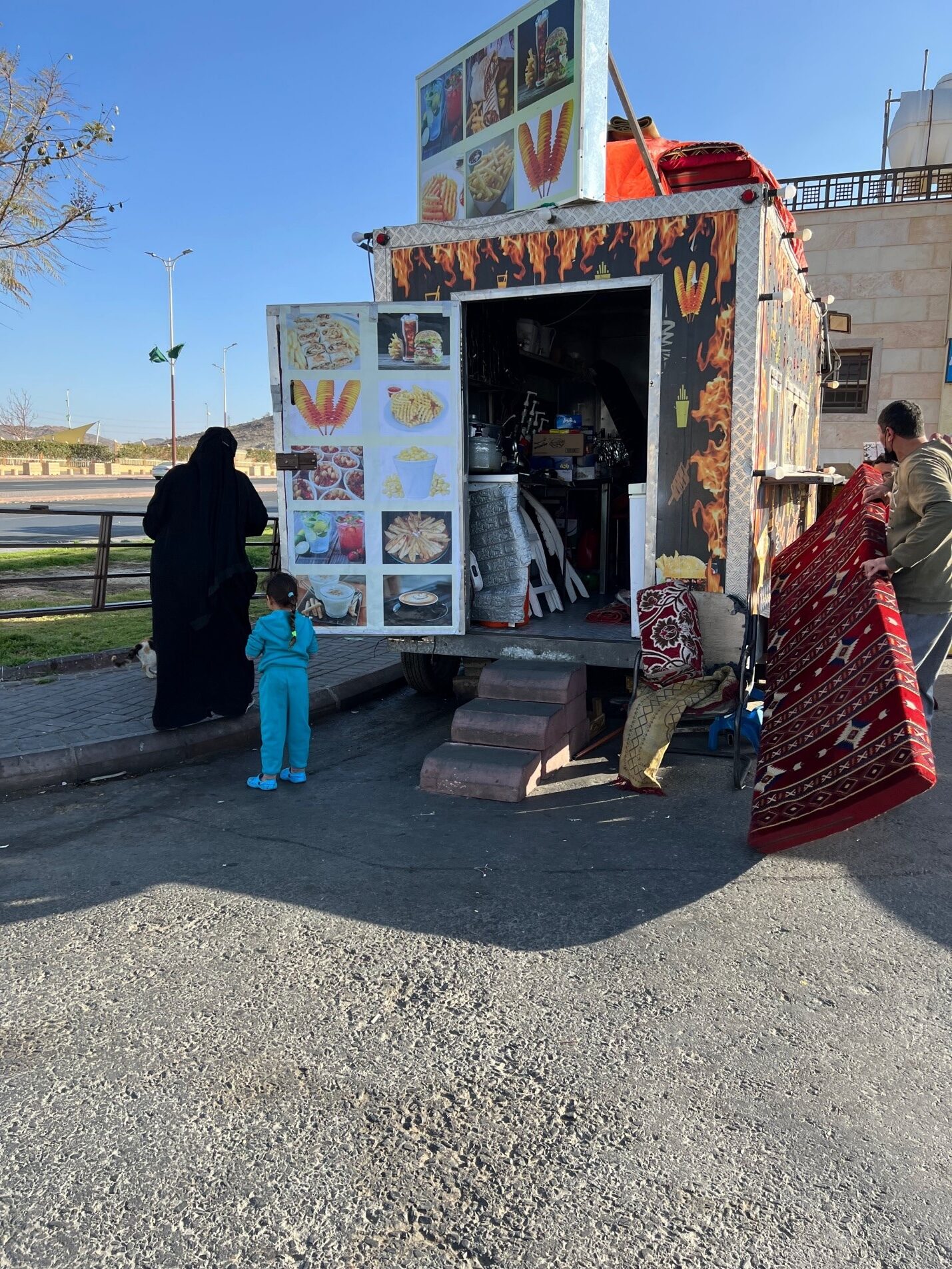
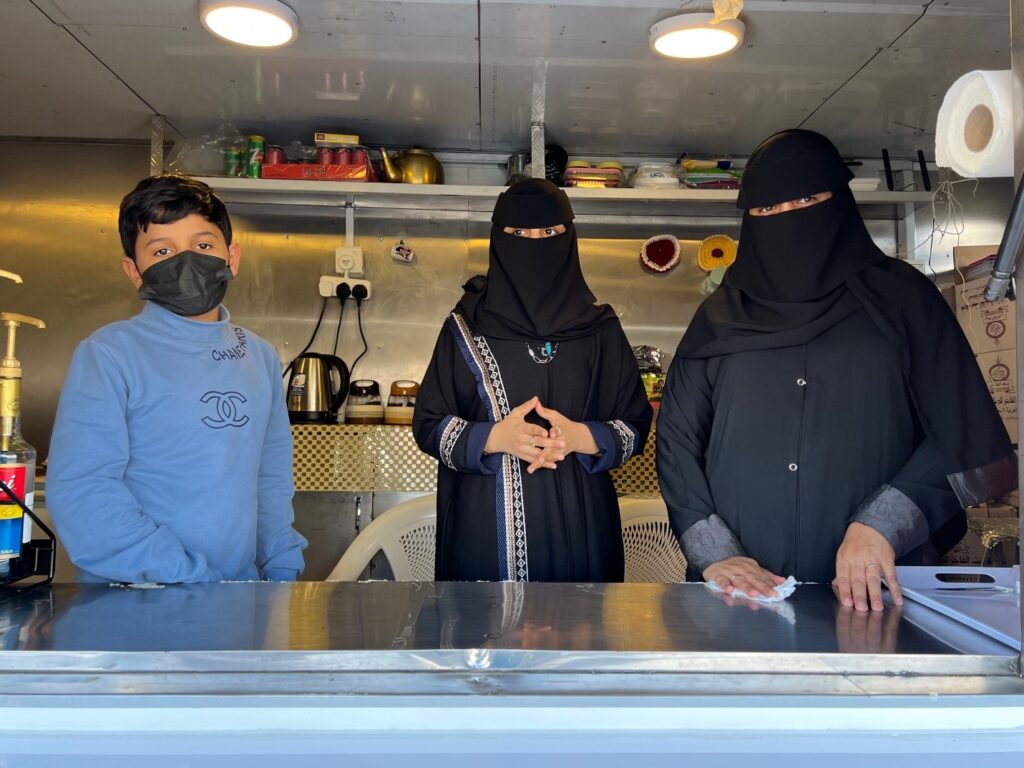
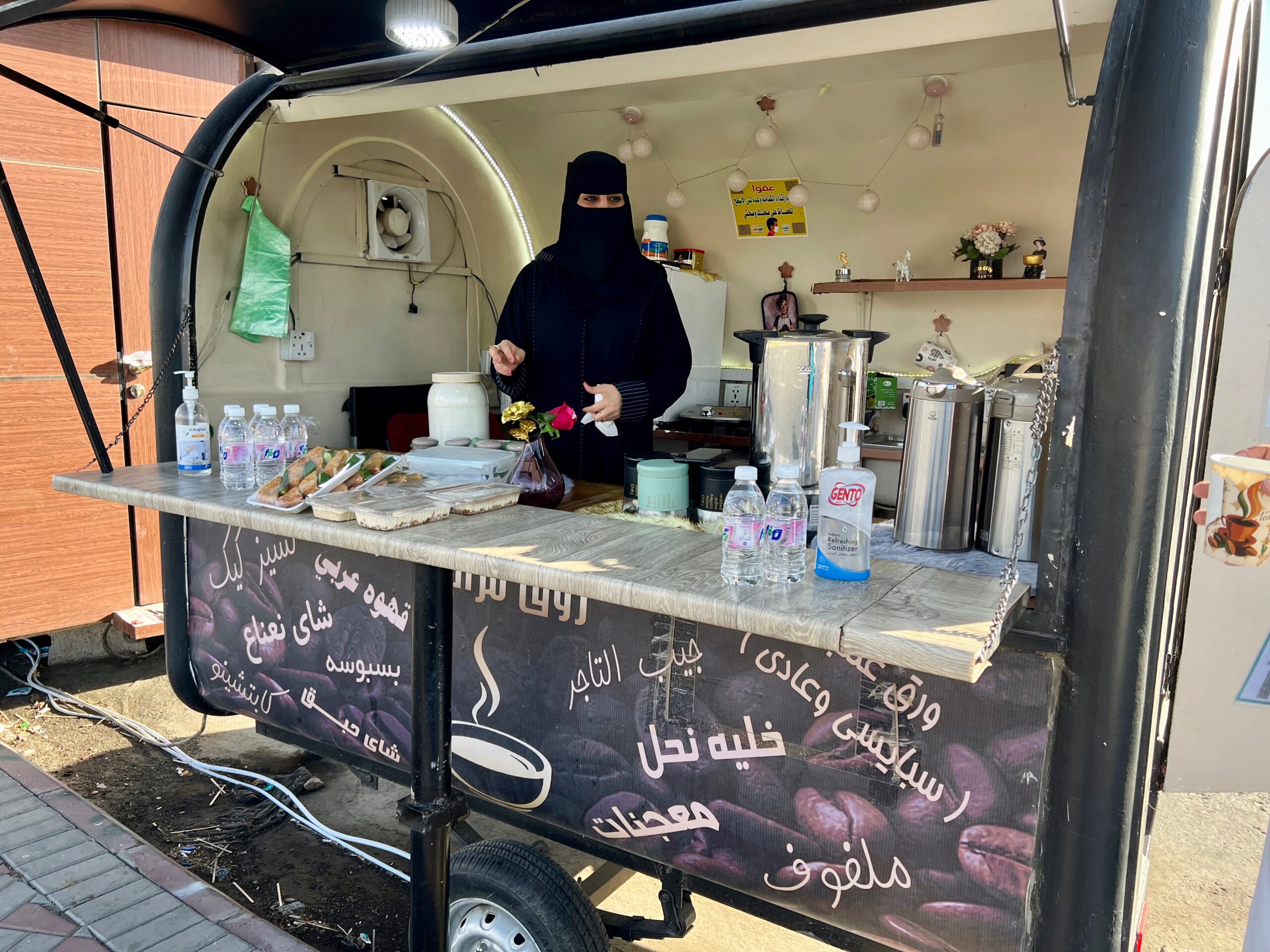
Yes, that is me driving to the historic center.
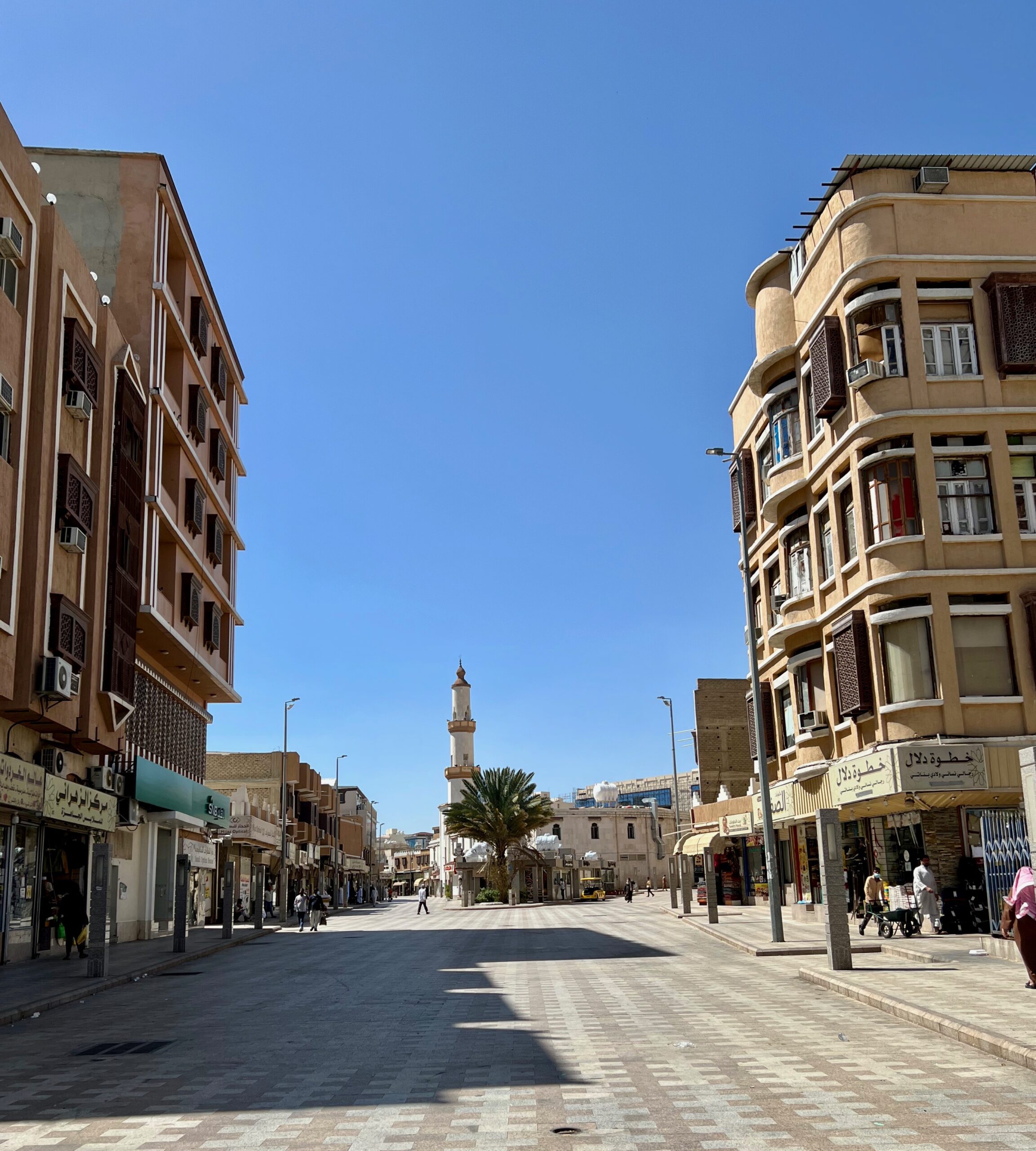
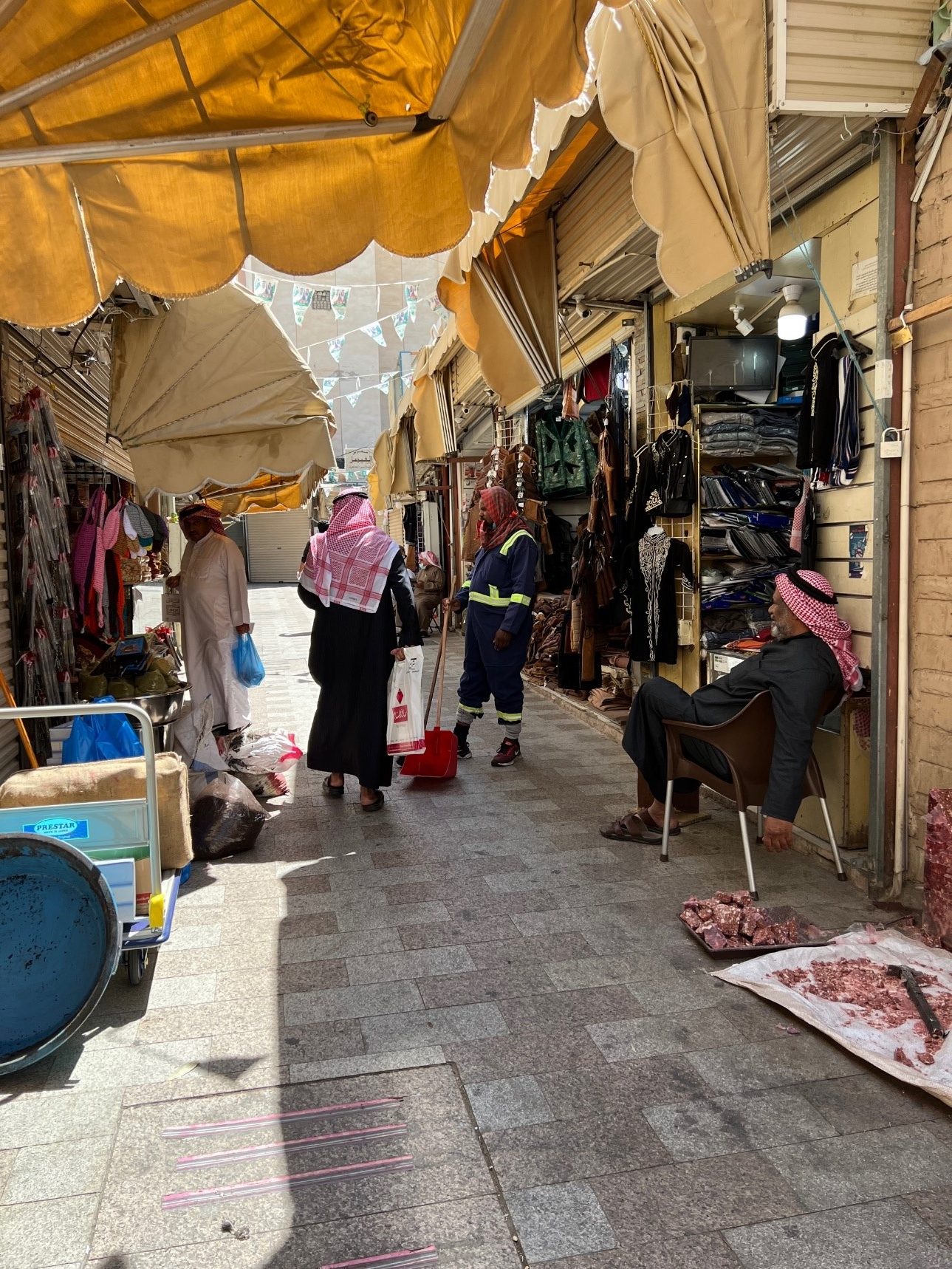
Although Saudi Arabian men traditionally wear white thobes (ankle-length robes with long sleeves), the heavier fabric of gray or black thobes adds warmth during colder months.
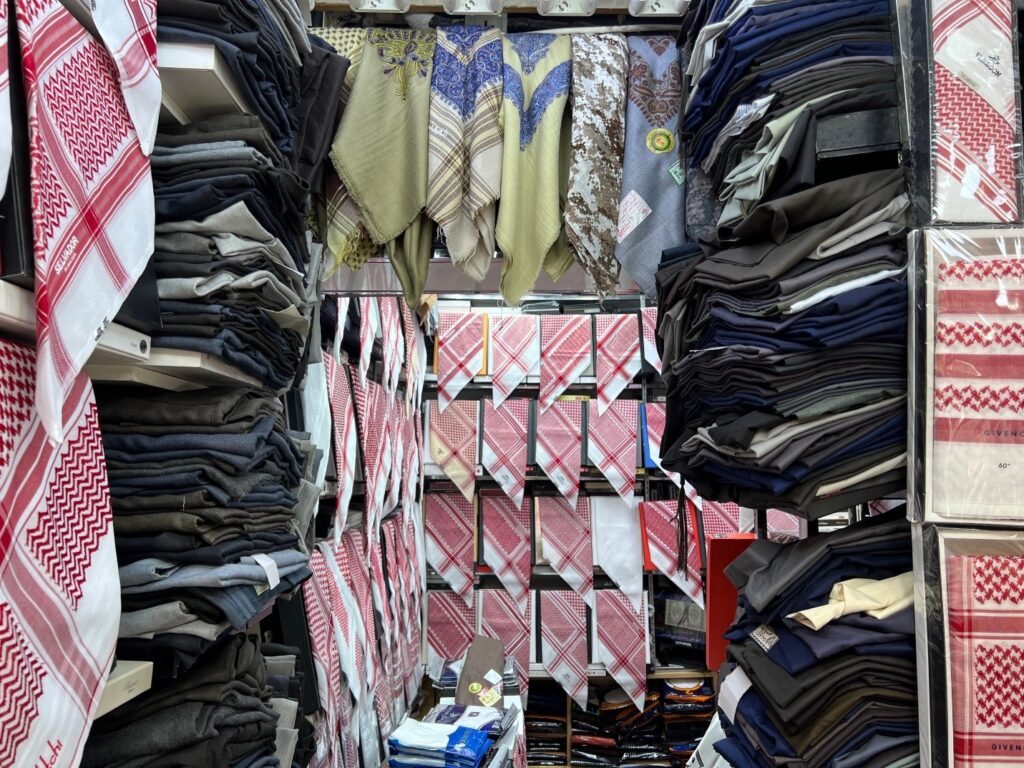
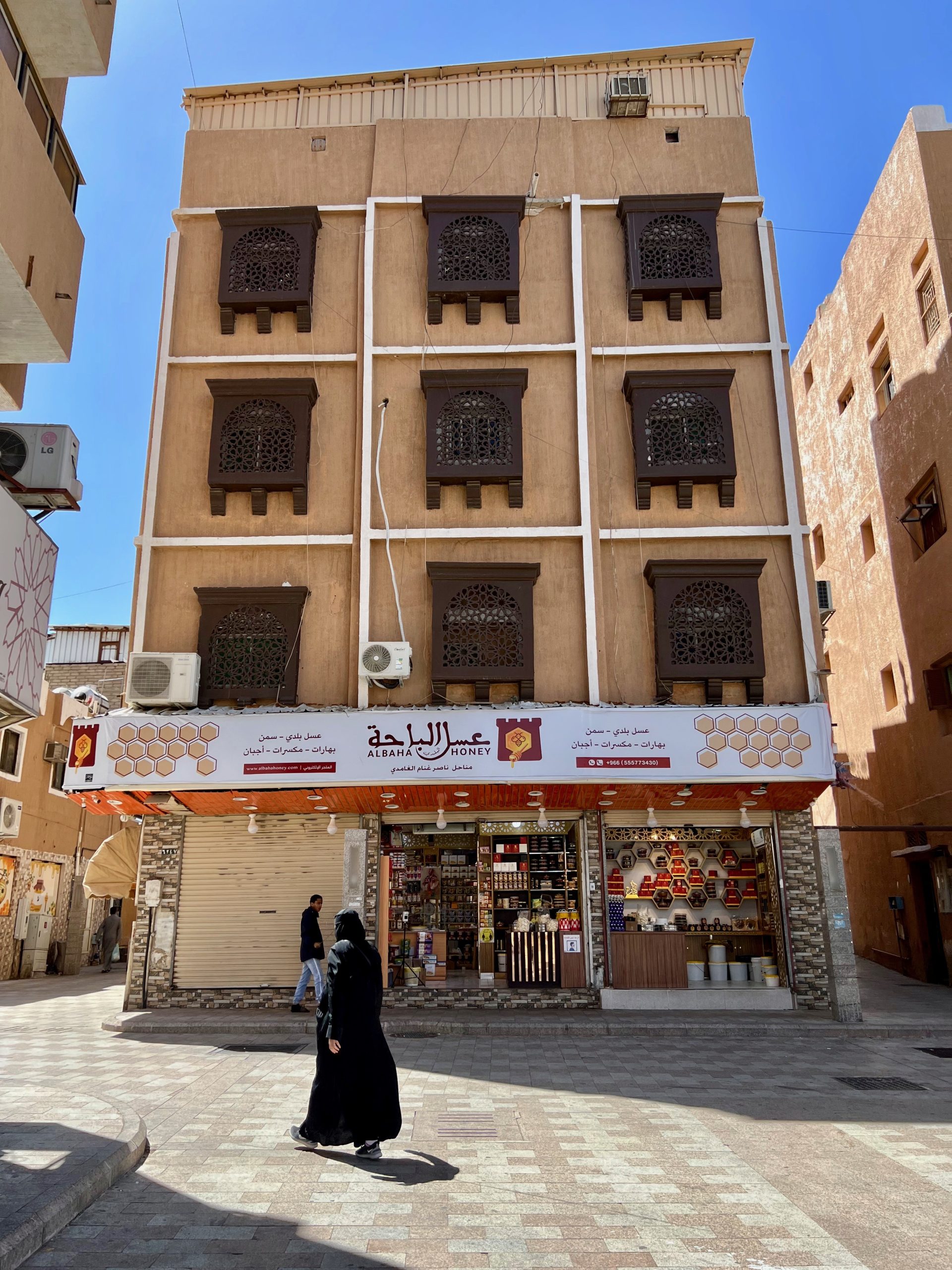
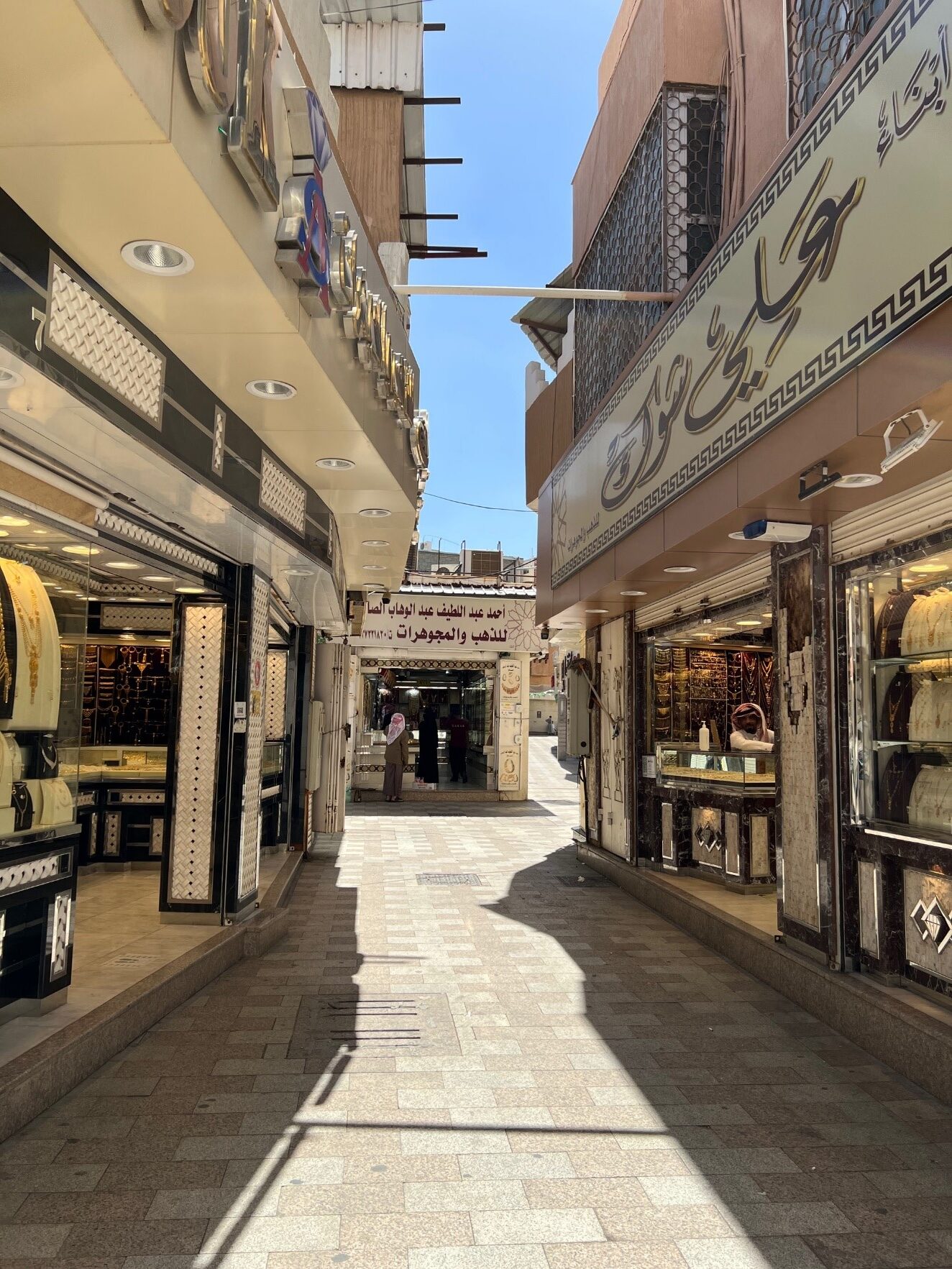
Respect for elders is first and foremost in the Arabian culture, as witnessed in the sweetness of this young man walking with his grandfather.
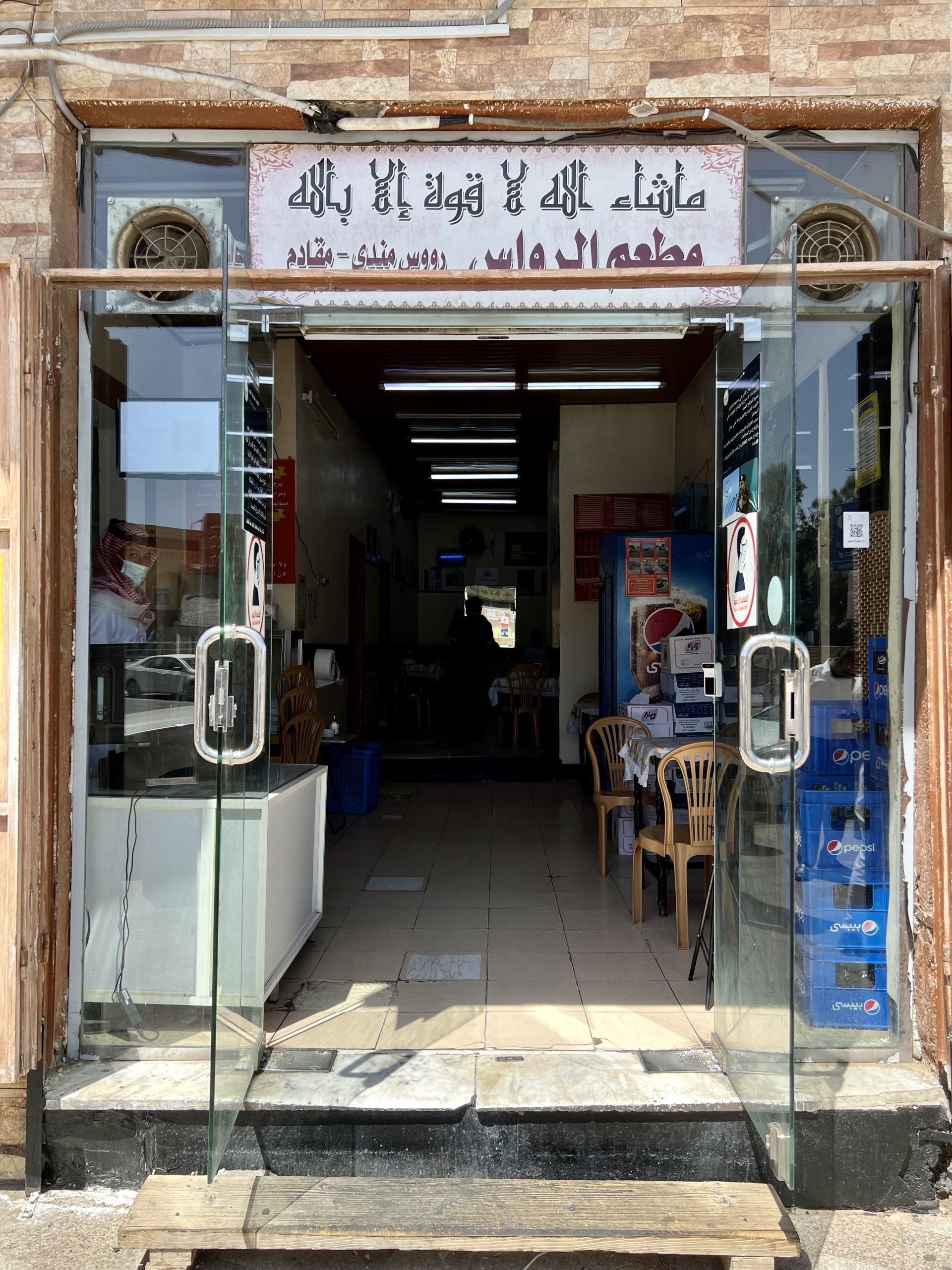
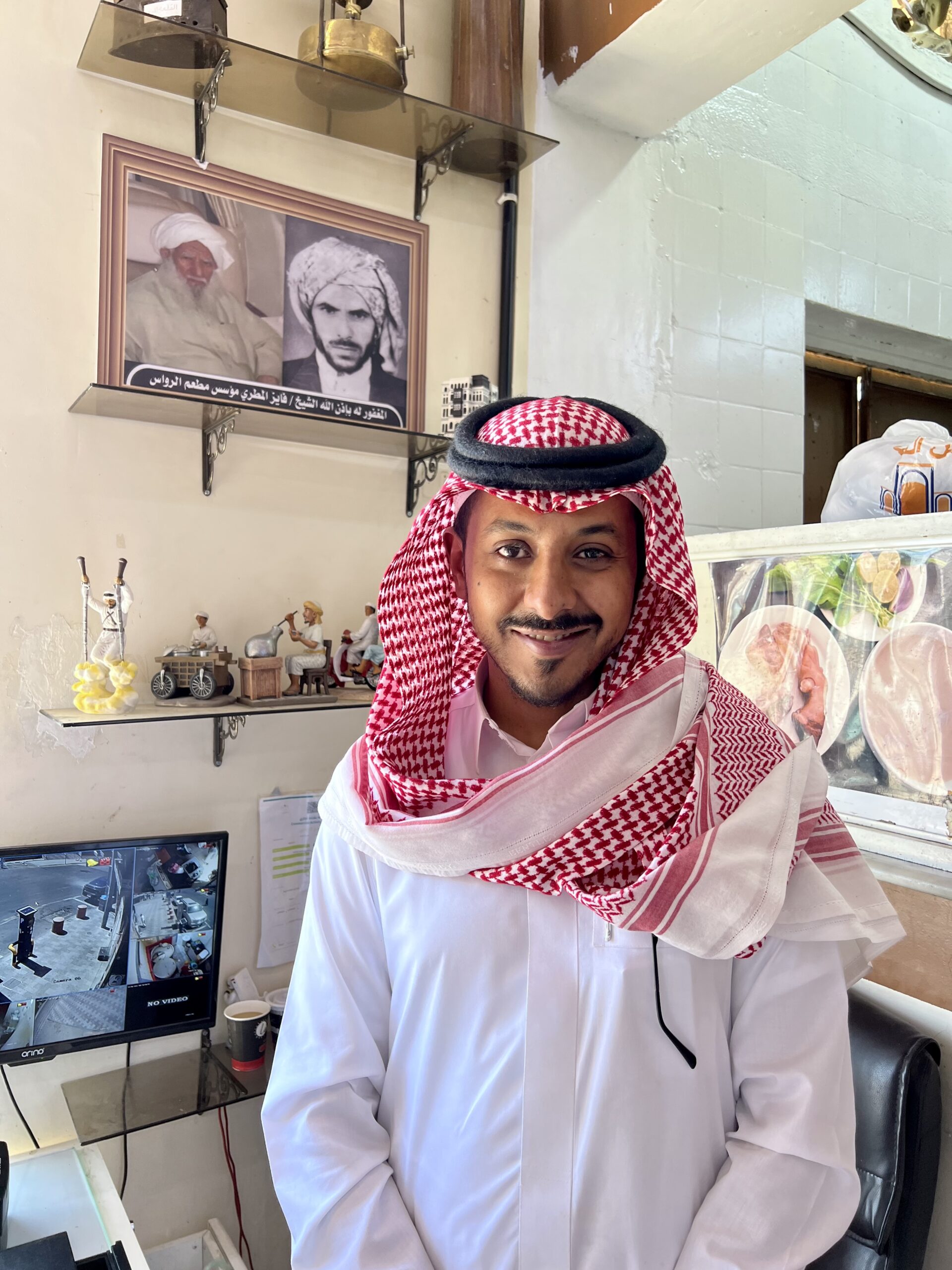

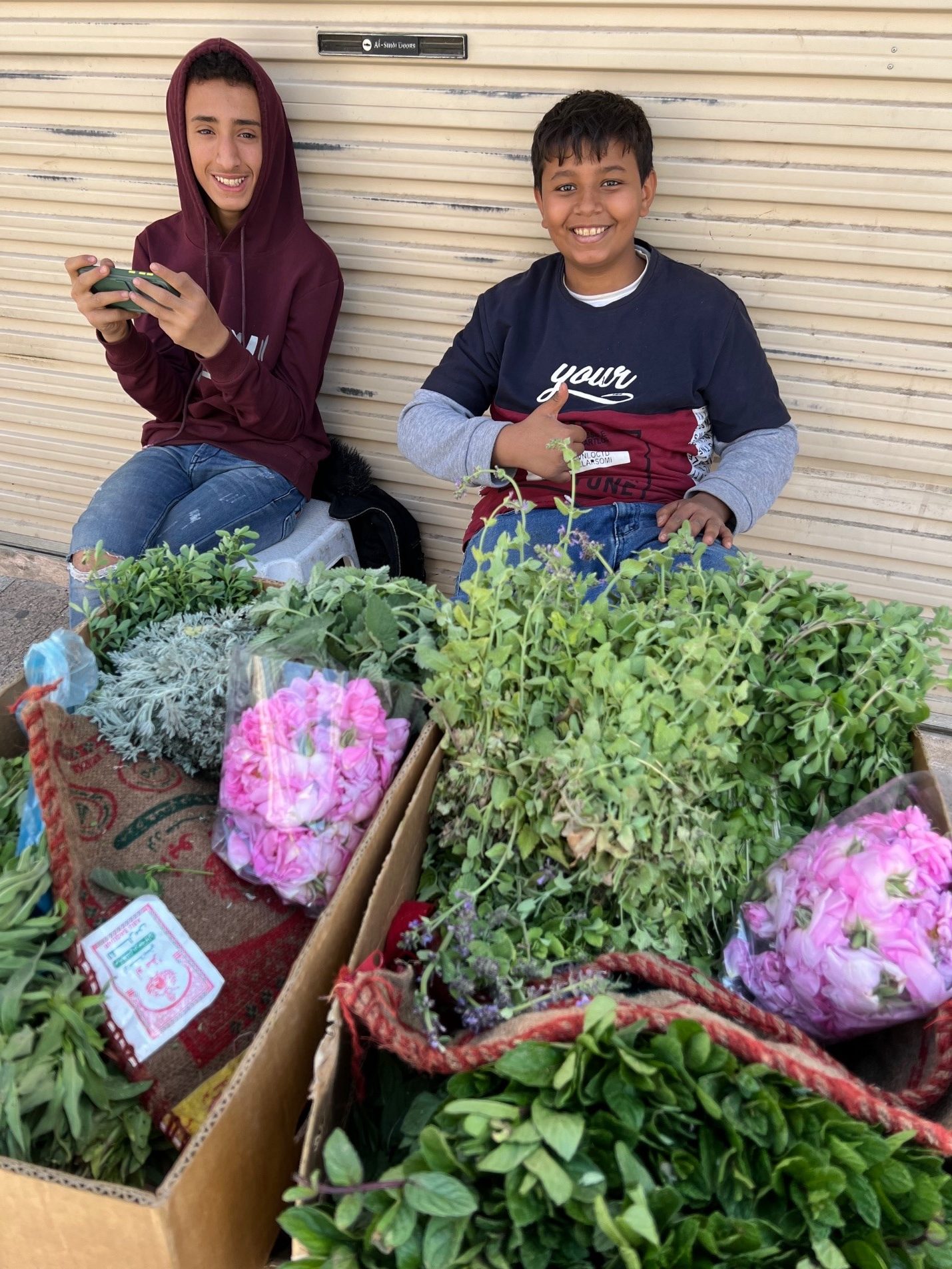
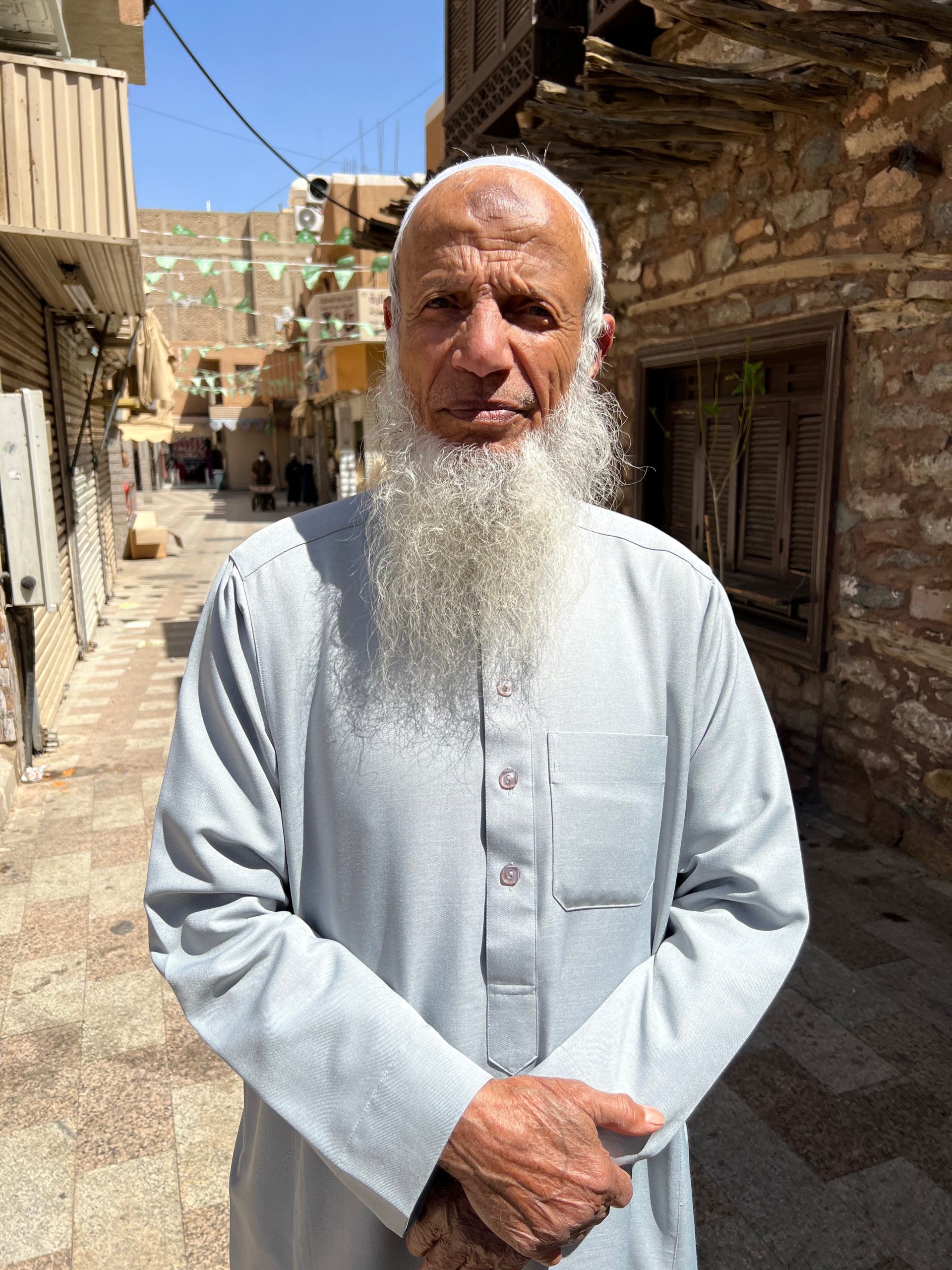
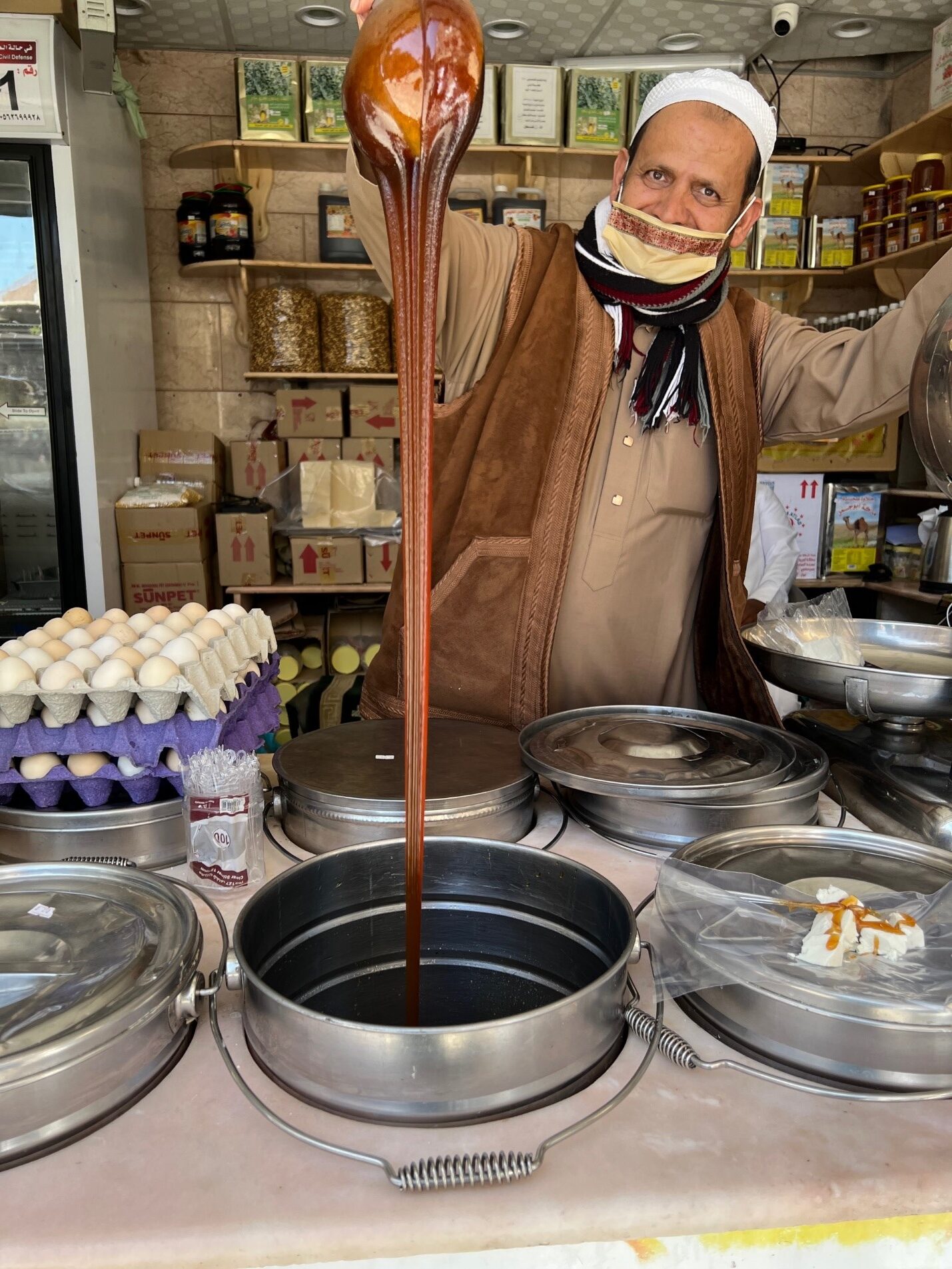

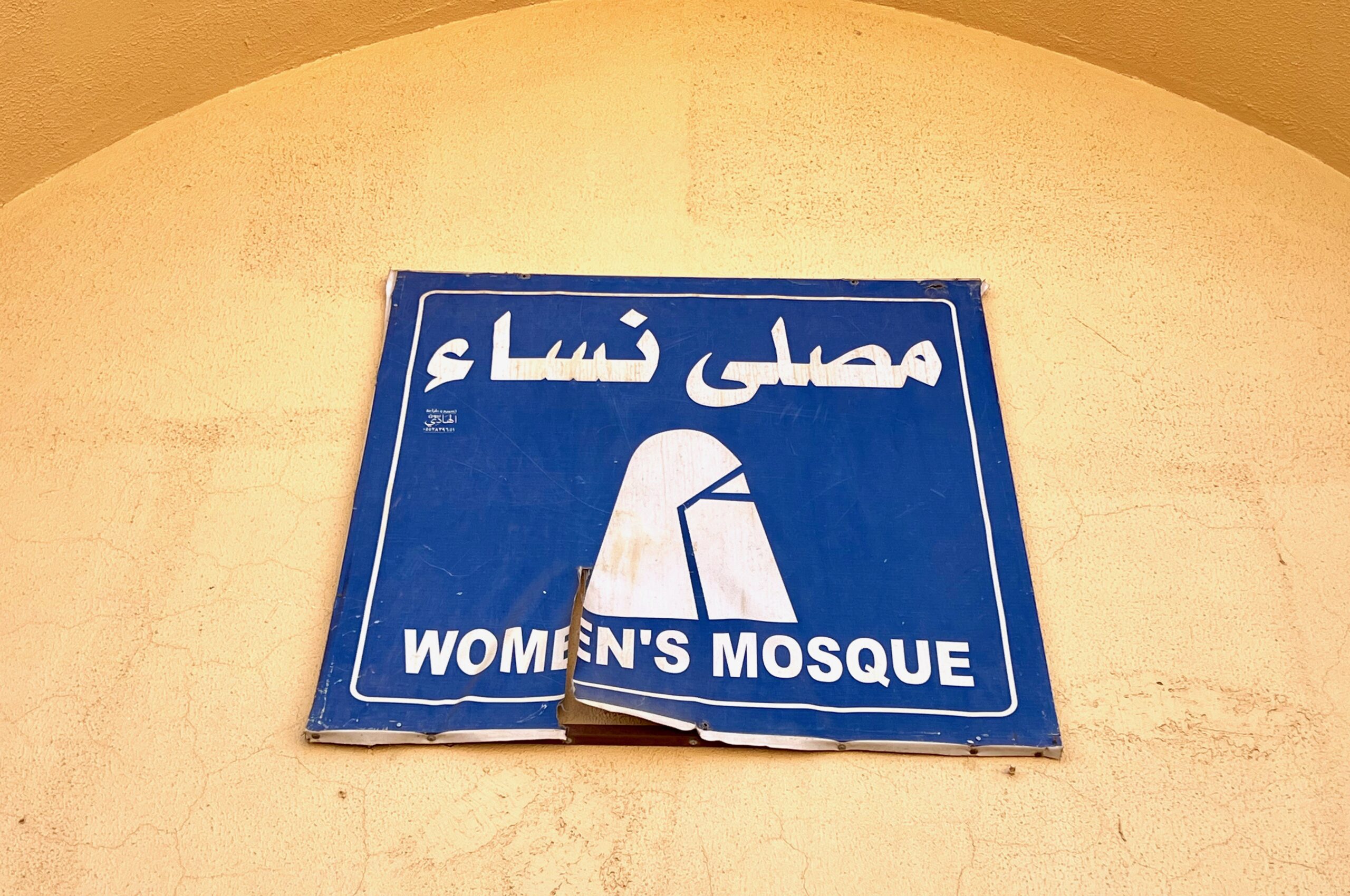
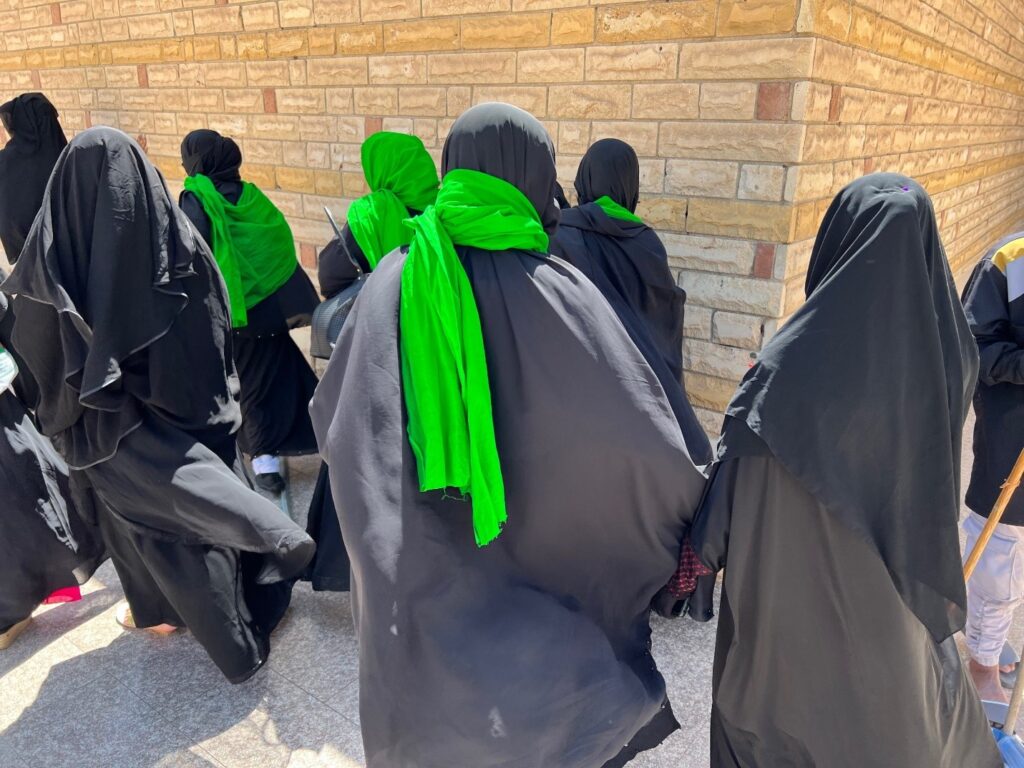
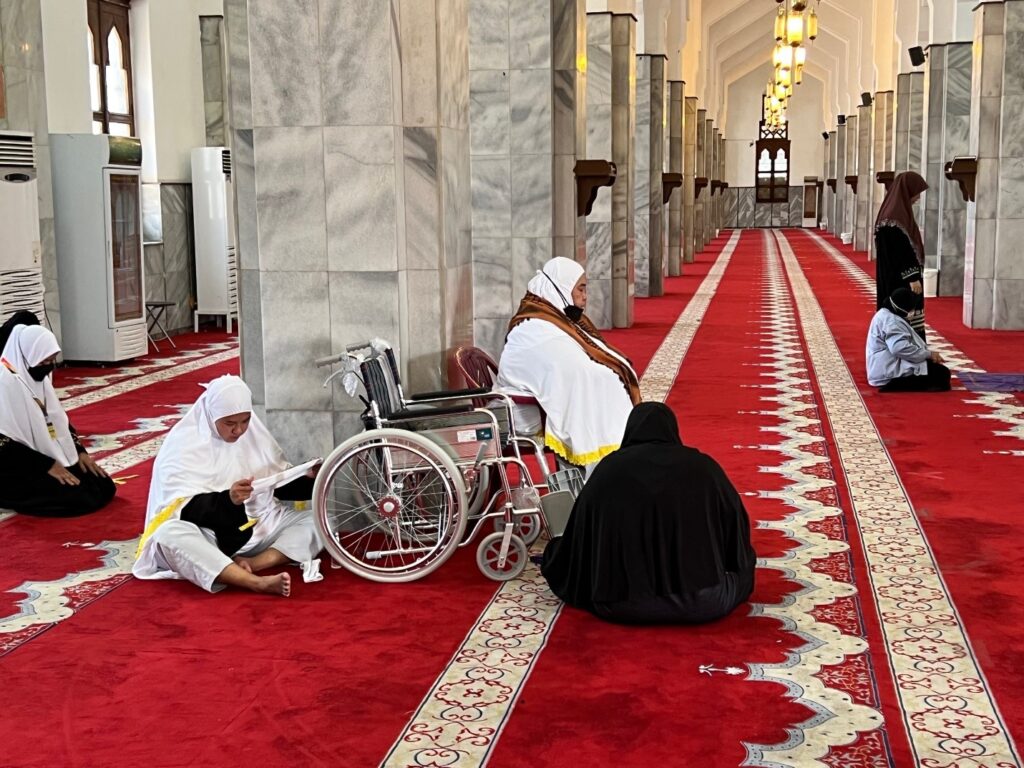
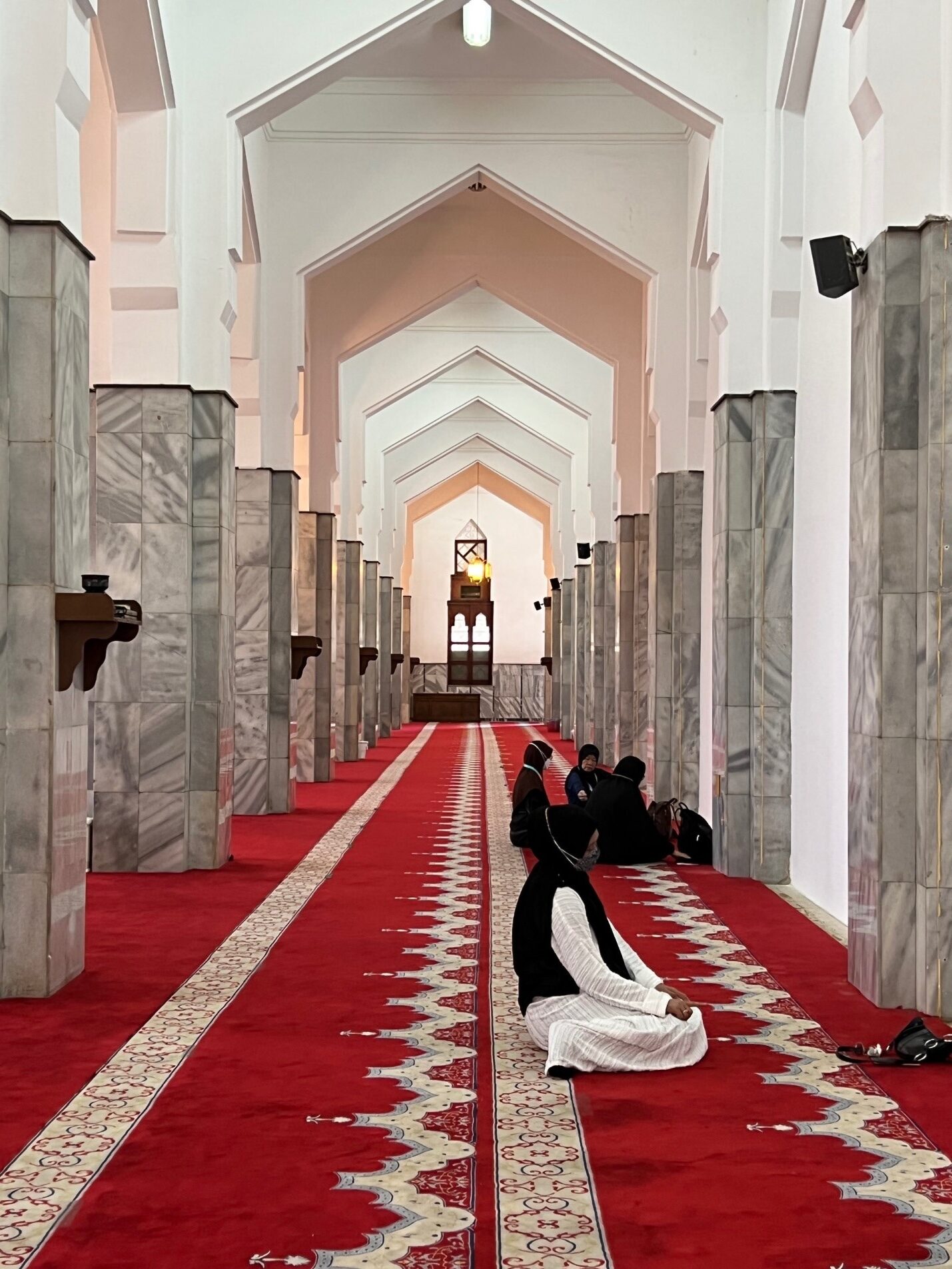
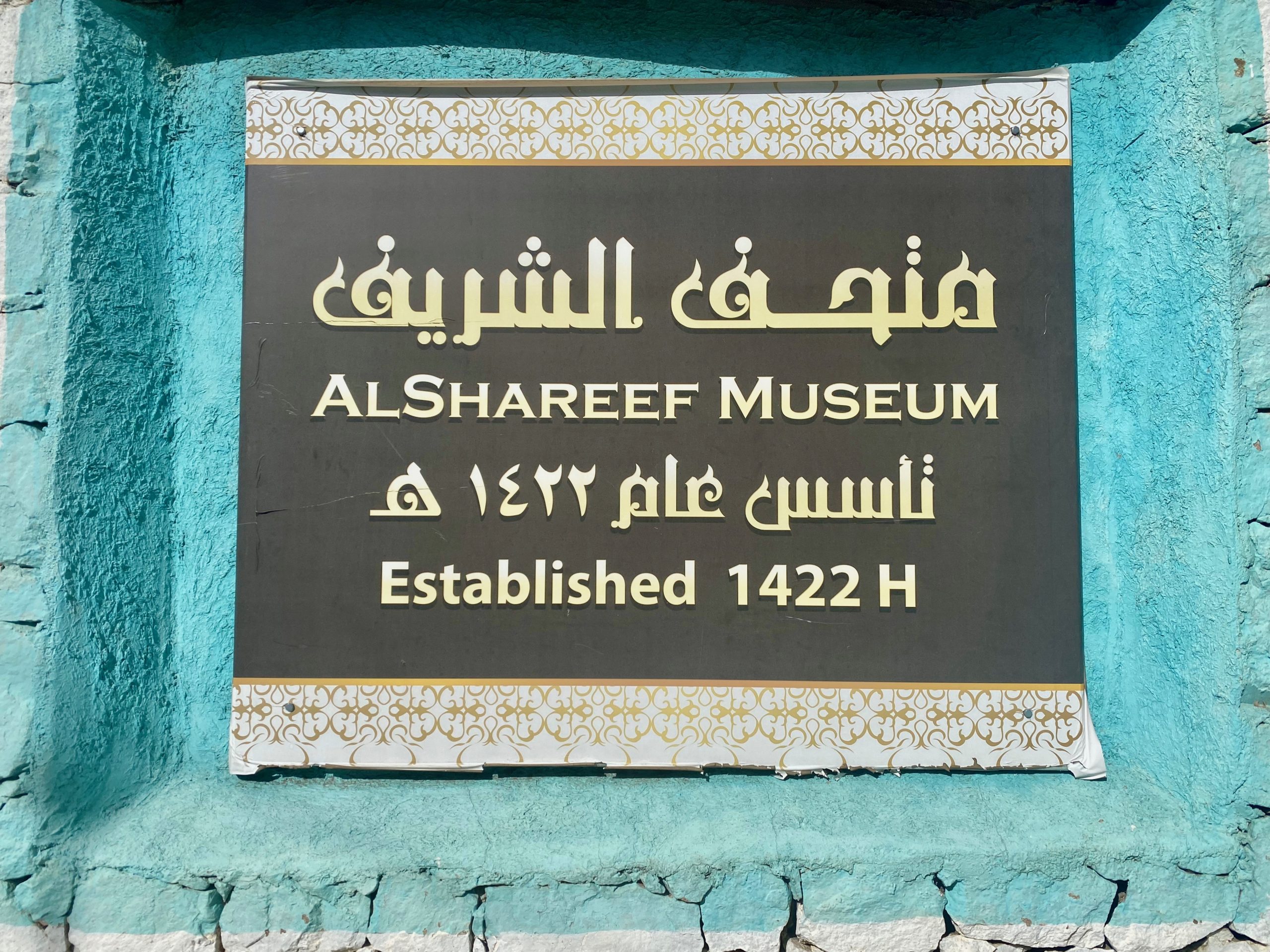
Taif has a rich, storied past, which is exquisitely portrayed by its museums. Al Shareef Museum is among the most prominent private museums in the city. The museum offers a clear glimpse into the region’s vibrant history. On display are some of the older tools and machines used in the Arabian Peninsula.
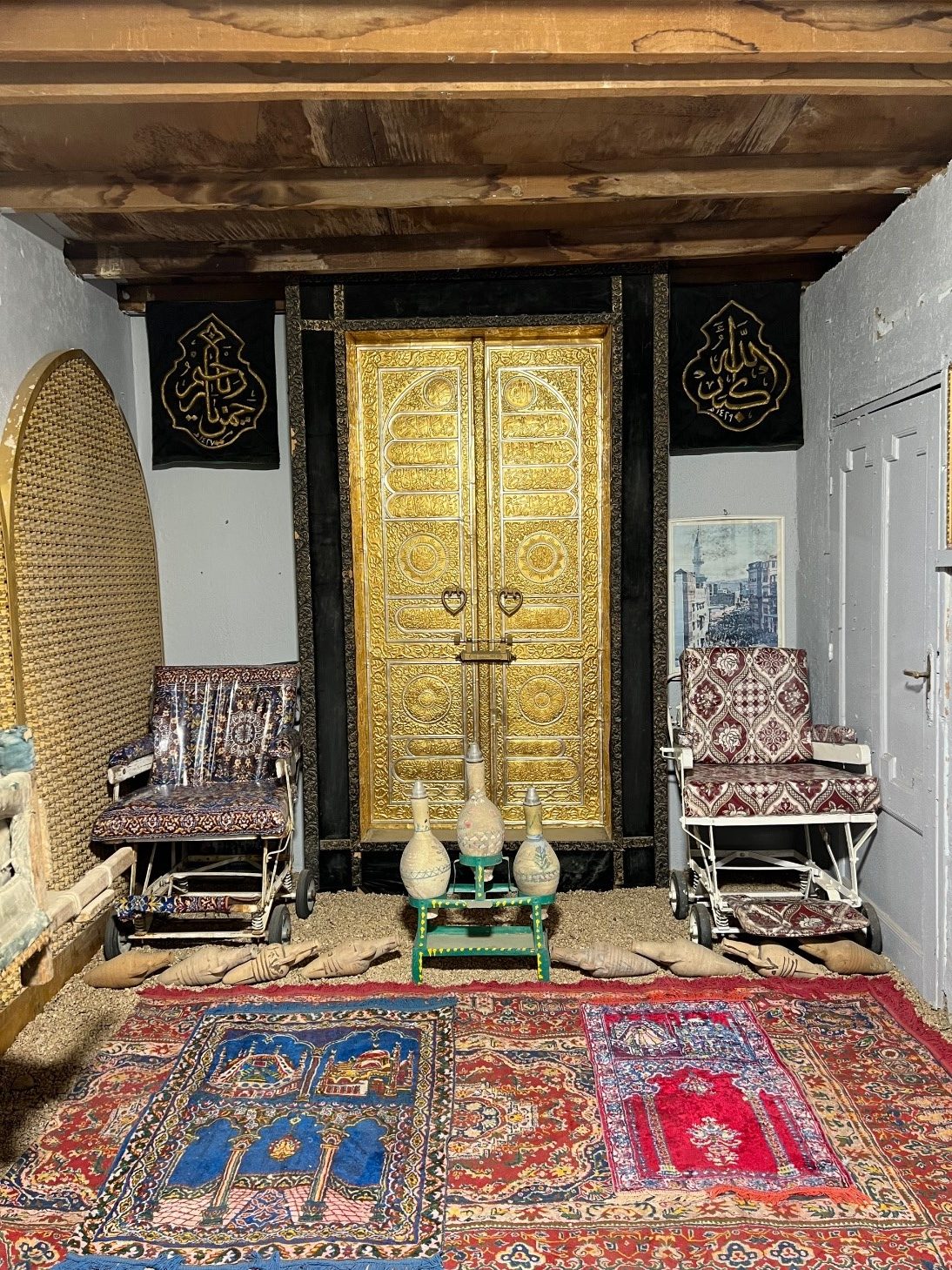
The Al Shareef Museum exhibits a large collection of heritage pieces and artifacts. It provides visitors with a deeper understanding of how the country’s ancestors lived in the past.
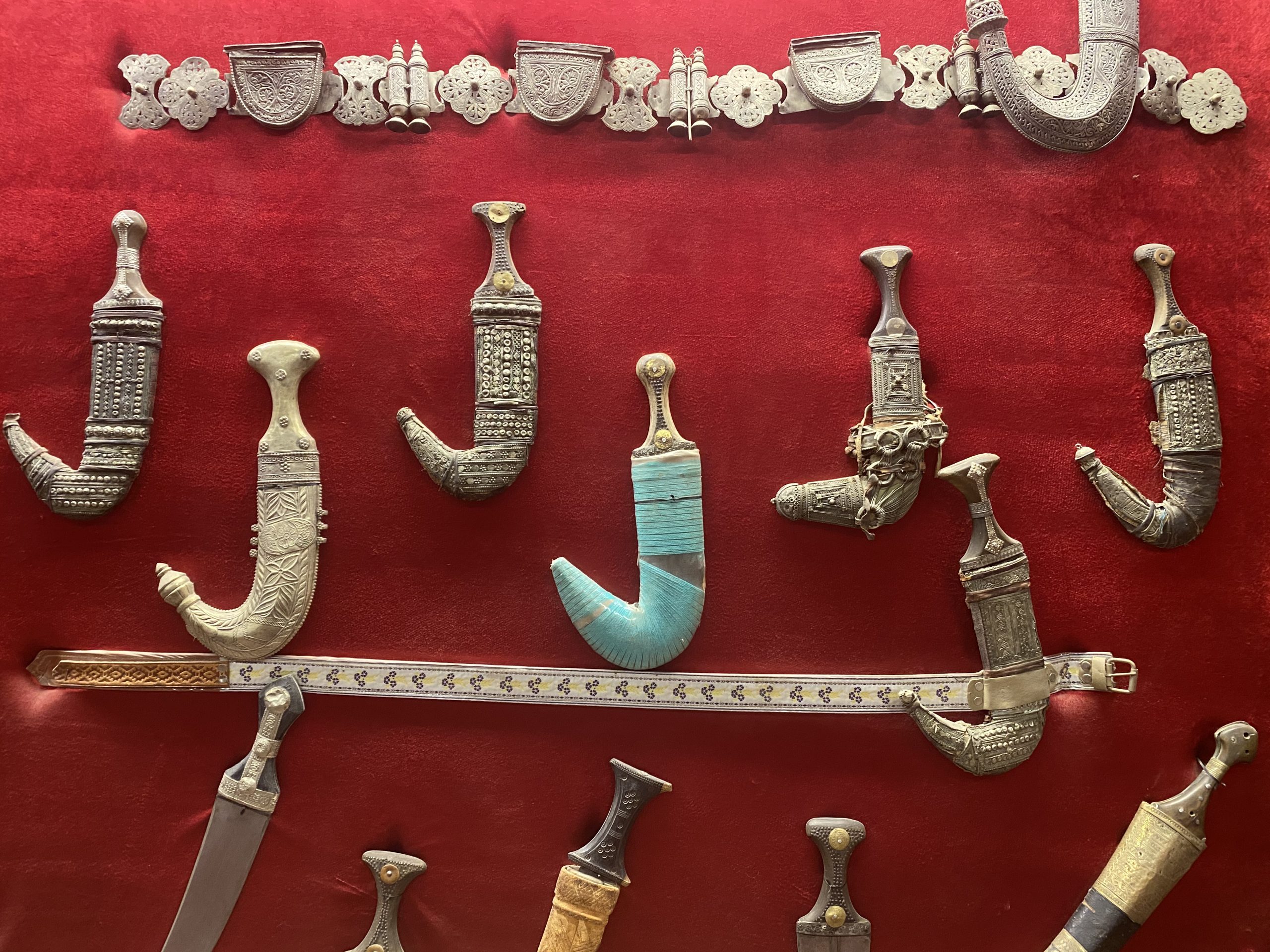
The art of making daggers and swords in Saudi Arabia is a long tradition that has been passed down from generation to generation. Many of the weapons are used for decorative and ceremonial purposes, especially those crafted from precious metals like gold and silver. The daggers are known as Jambiya, meaning sidearm, as they are traditionally worn attached to a belt around a man’s waist. The swords are used during some traditional Arab warrior dances.
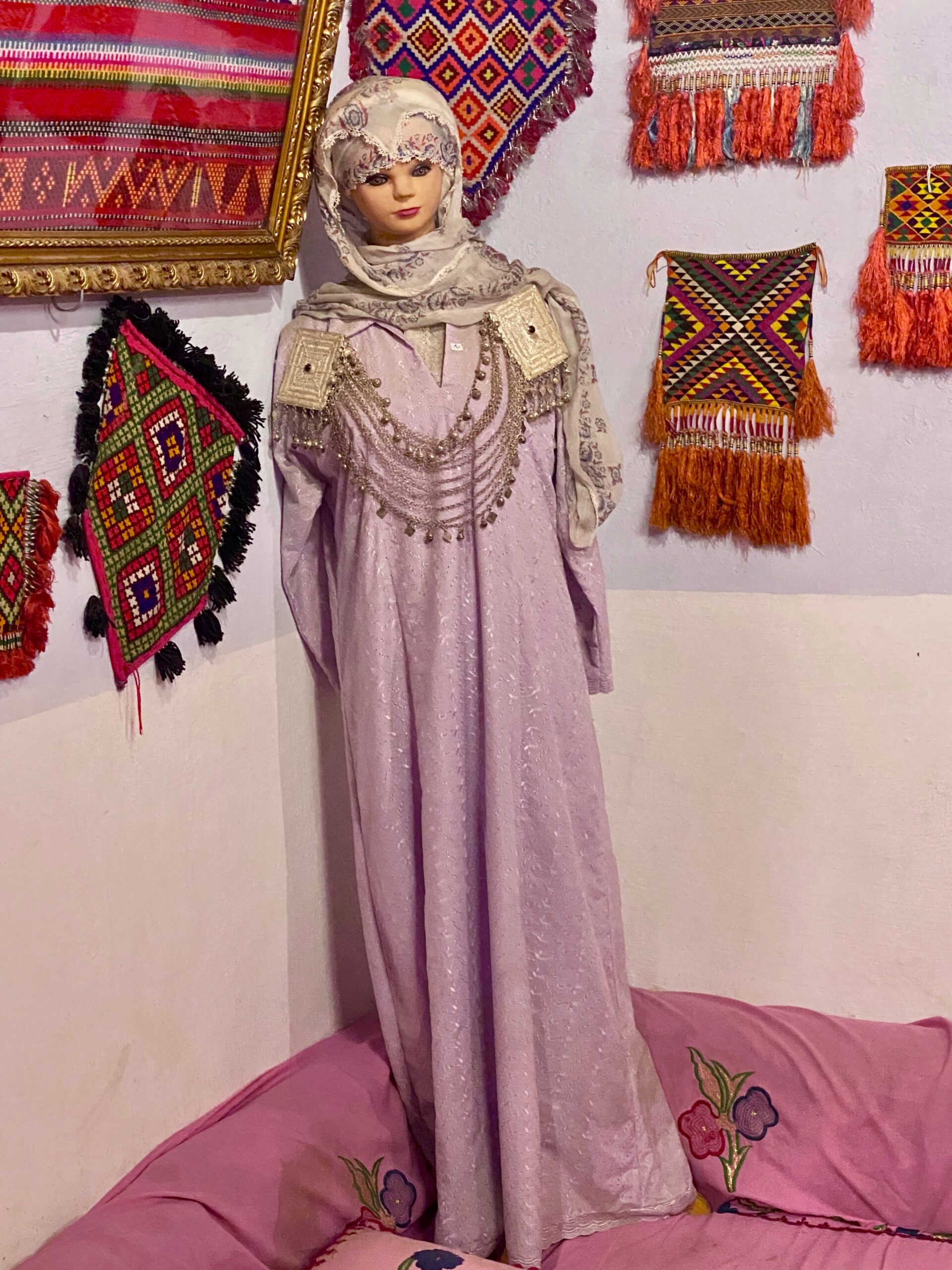
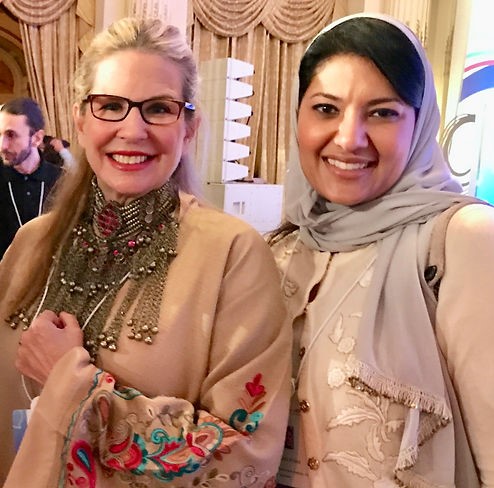
In 2017, I wore a Bedouin necklace at a conference in New York City that I attended with HRH Princess Reema Bint Bandar Al Saud, now the Saudi Arabian Ambassador to the United States.
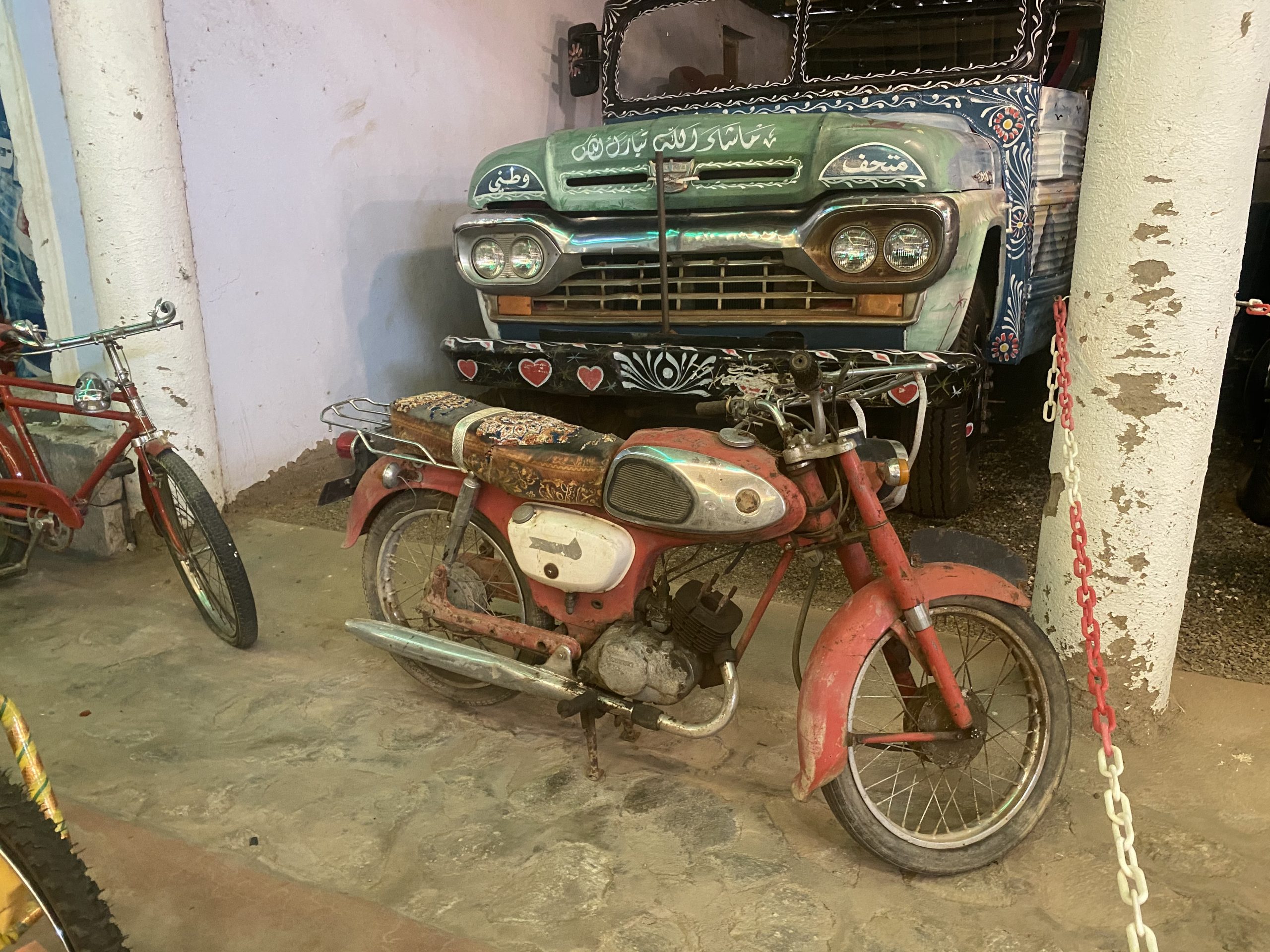

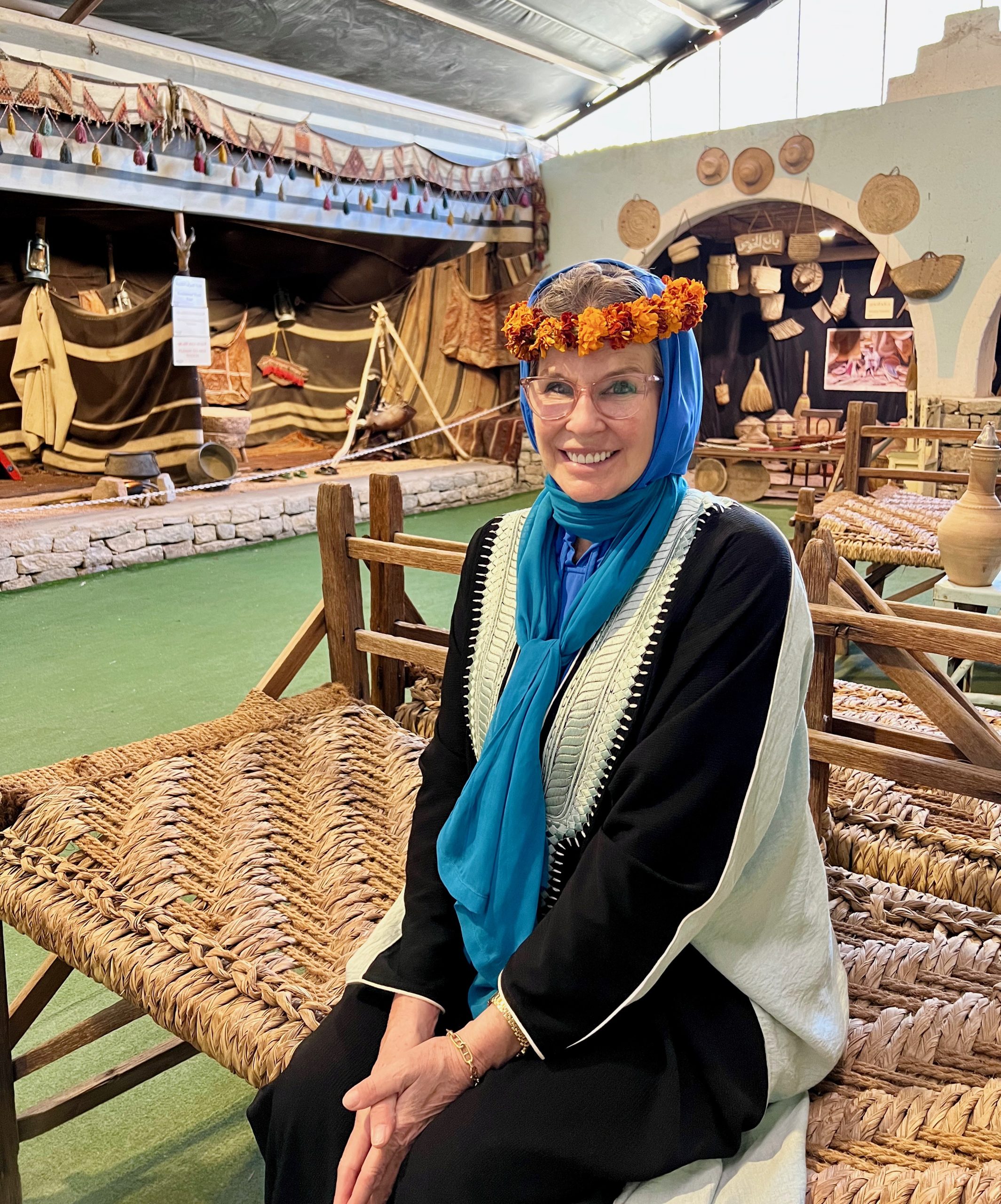
I am seated on a traditional bed wearing a Flowerman wreath. The Flowerman Festival celebrates cultural traditions by wearing garlands. Flowermen crown their heads with flowers and herbs. Many women create and sell the flower crowns in the streets and souks.
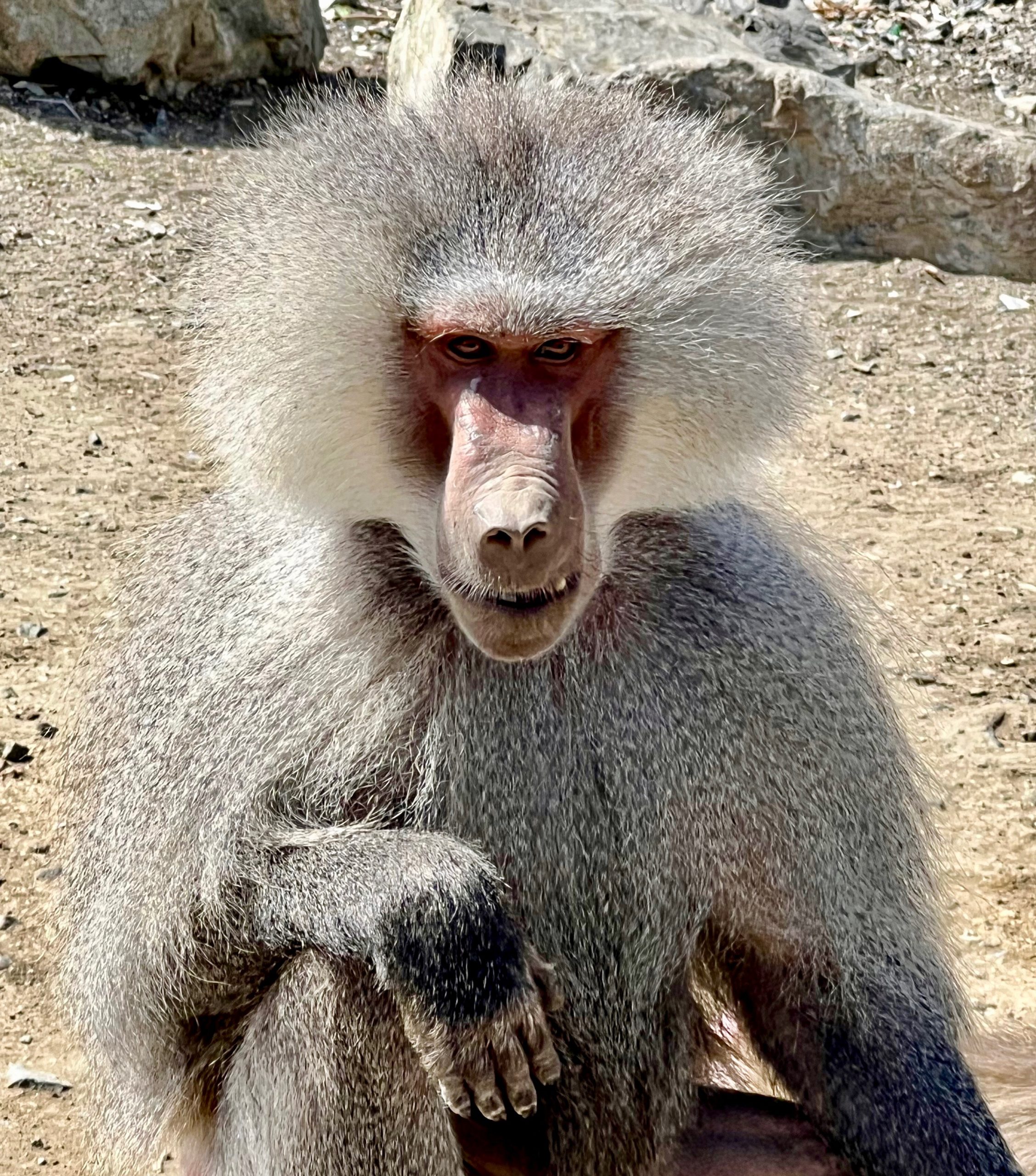
Al-Hada Mountain is known for baboons that live on the sides of its highways. Some say they are dangerous and wild, others bring them fresh fruits every day. Socially sophisticated with complex family systems, they are currently overpopulated because their primary natural predators, Arabian Leopards, are nearly extinct.
I am a board member of Catmosphere.org with HRH Princess Reema Bint Bandar Al Saud. One of my goals is to support this organization that reintroduces cats into their native environments—resetting the ecological balance.

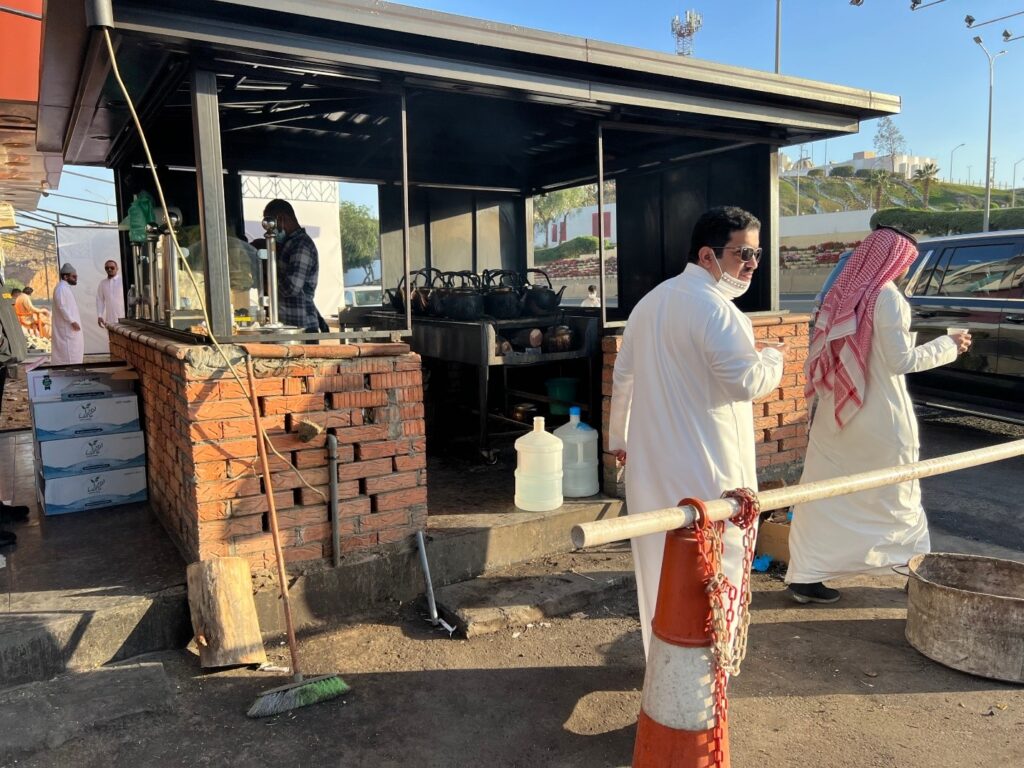
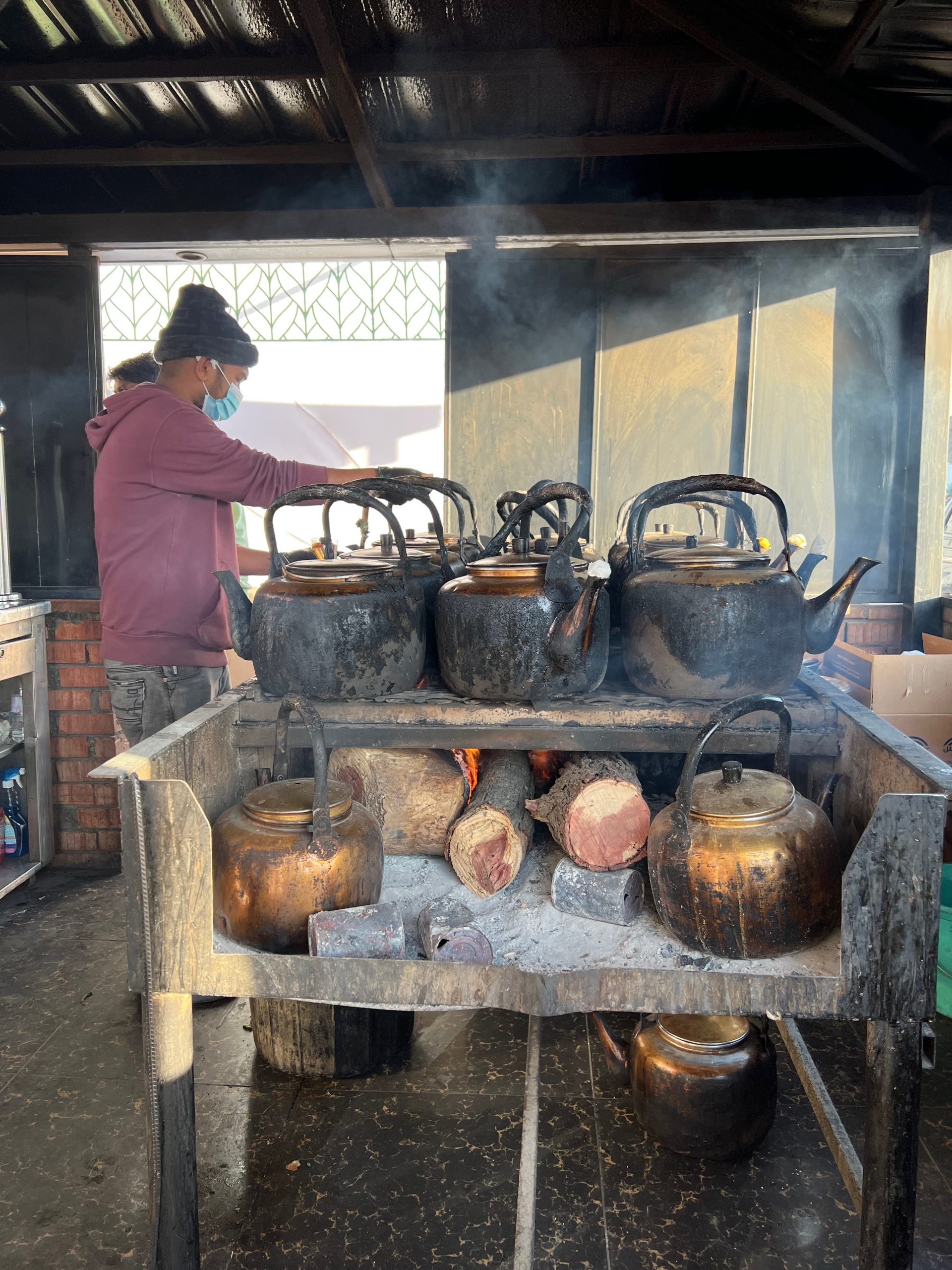
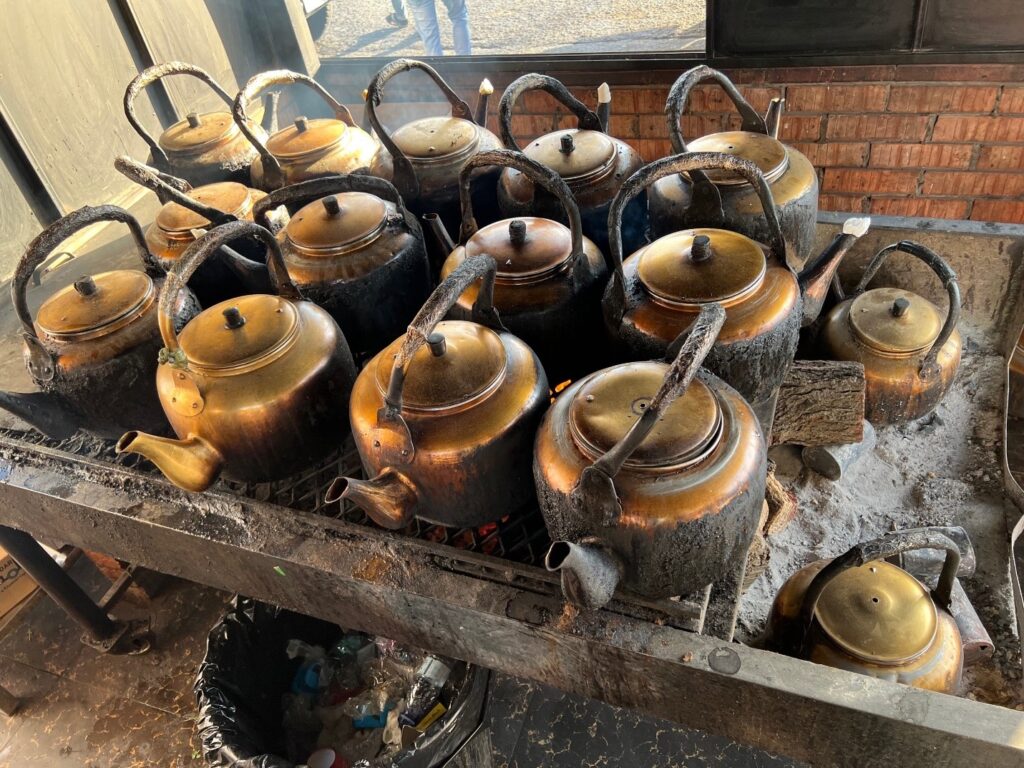

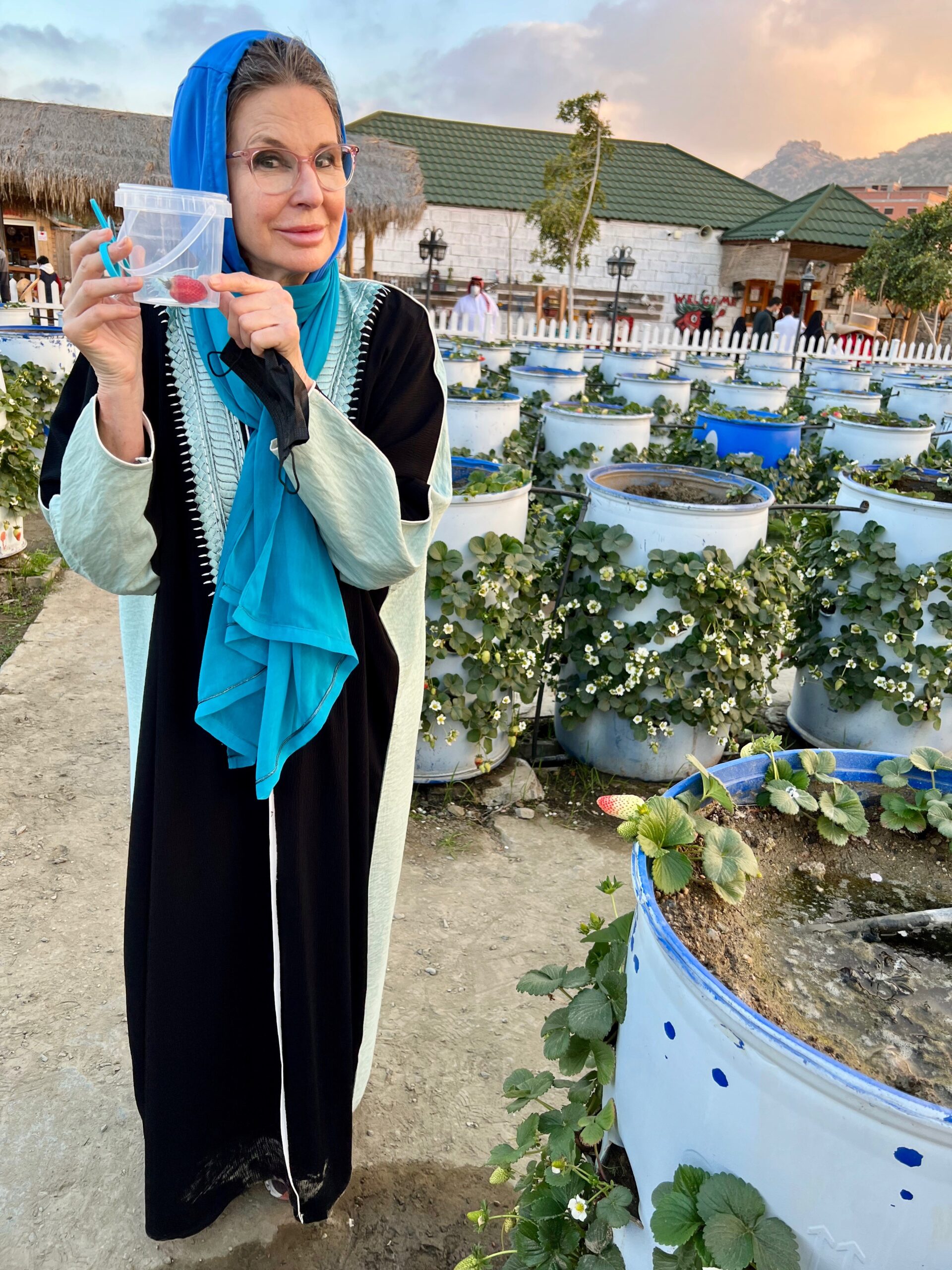
Makkah is just one hour from Taif.
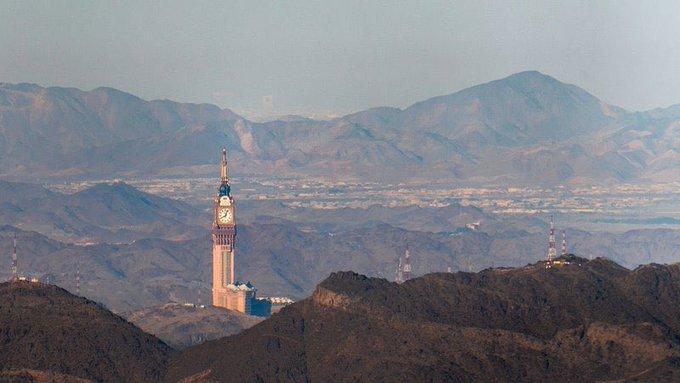
That was as close as this Episcopalian would get.
